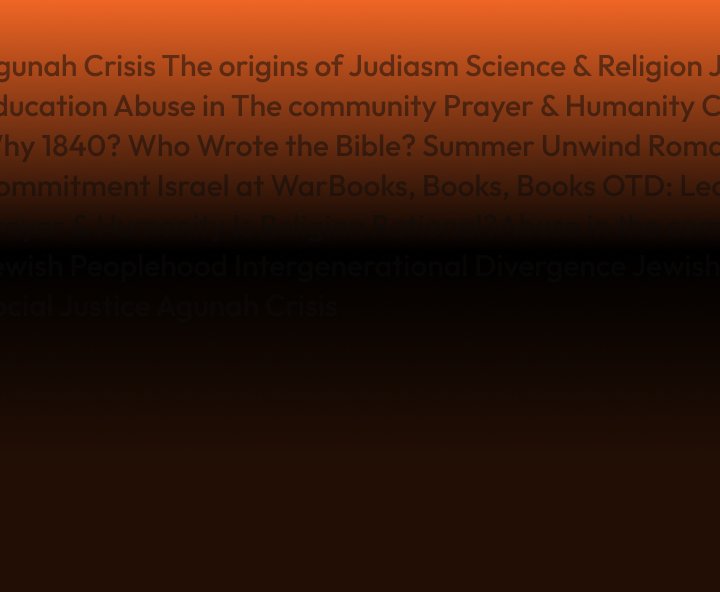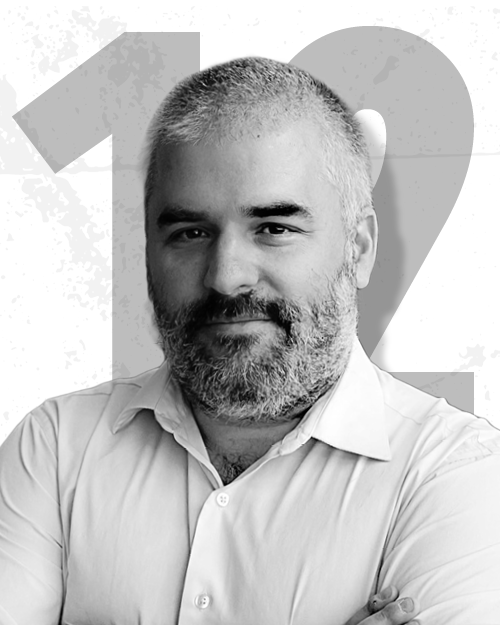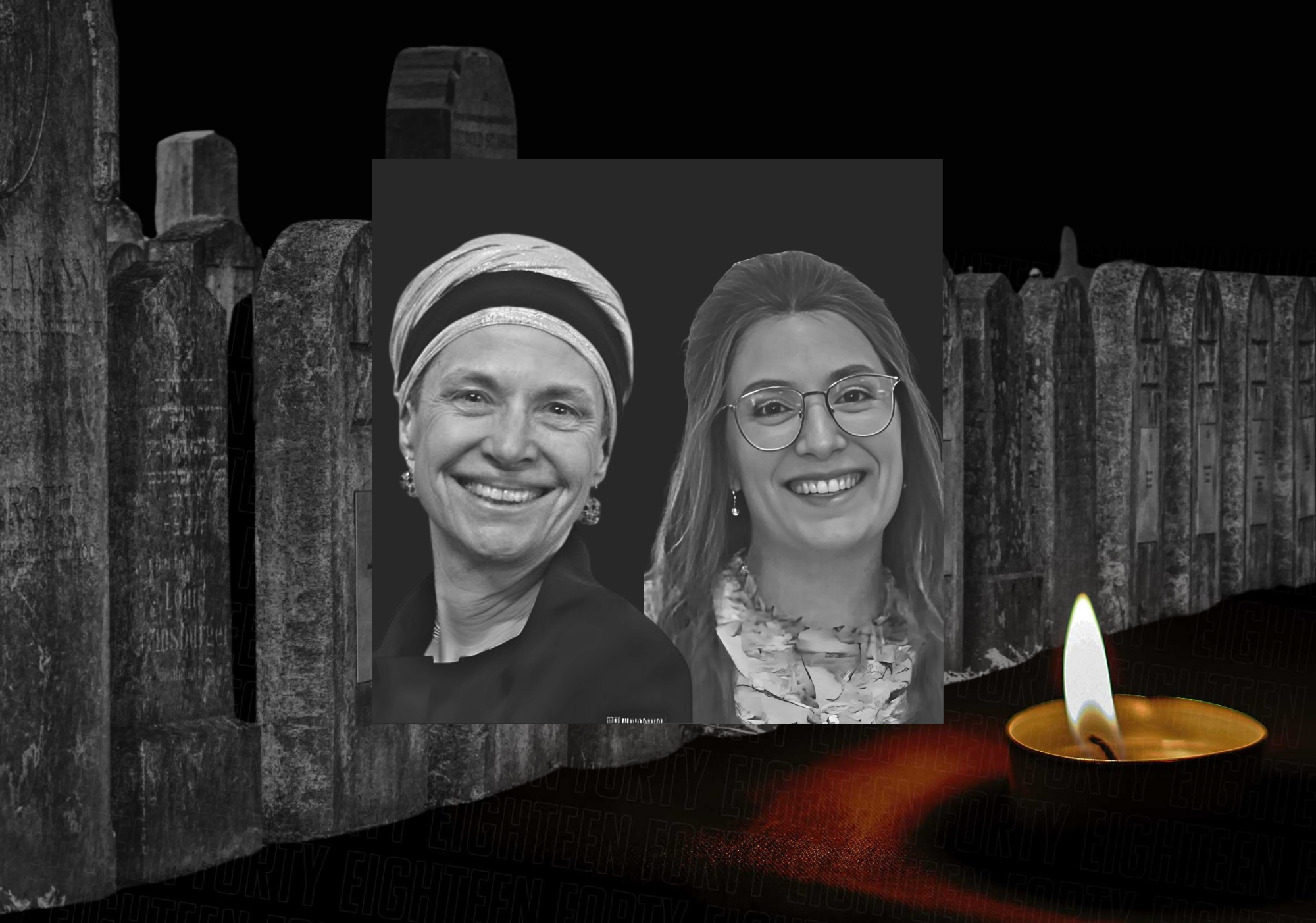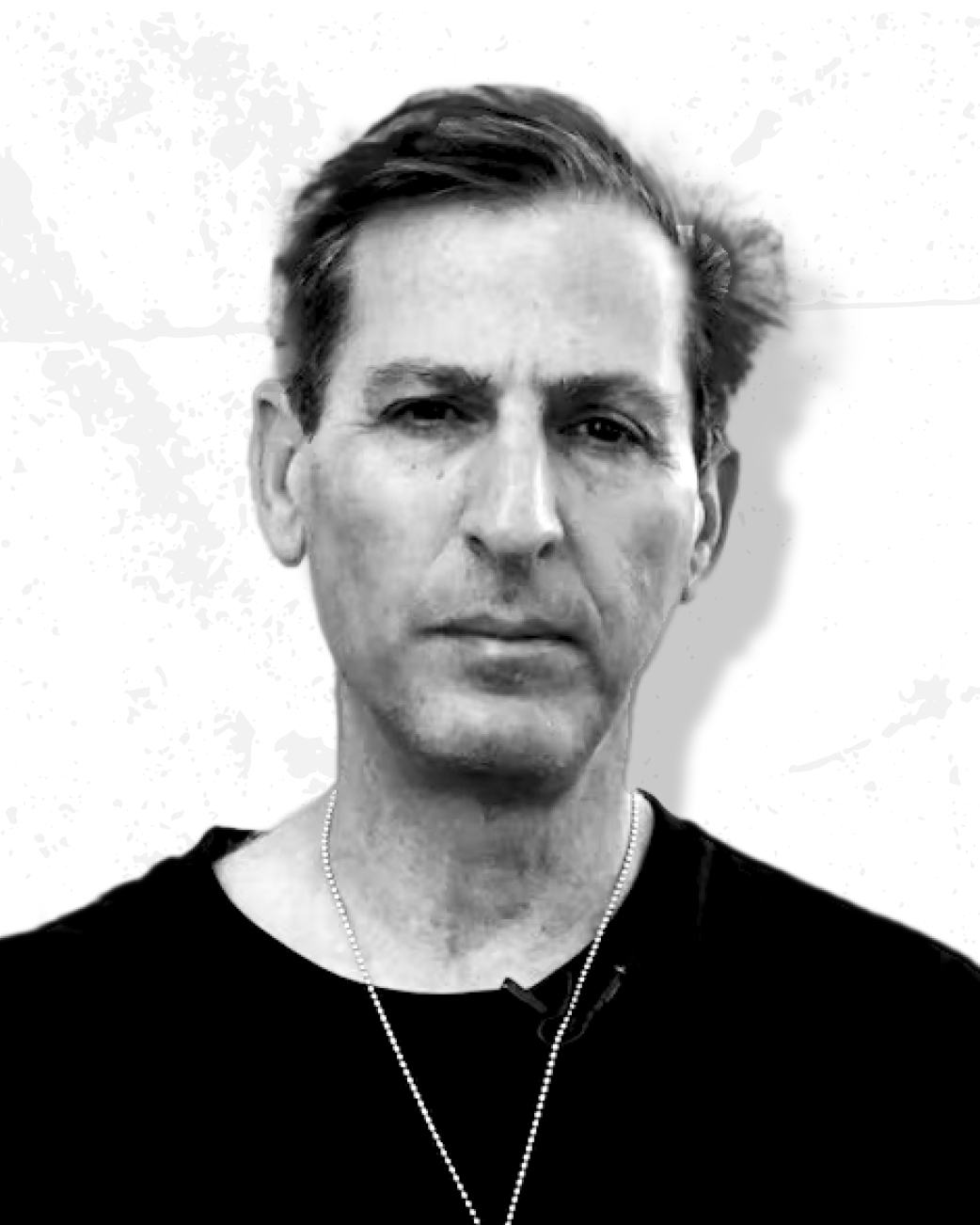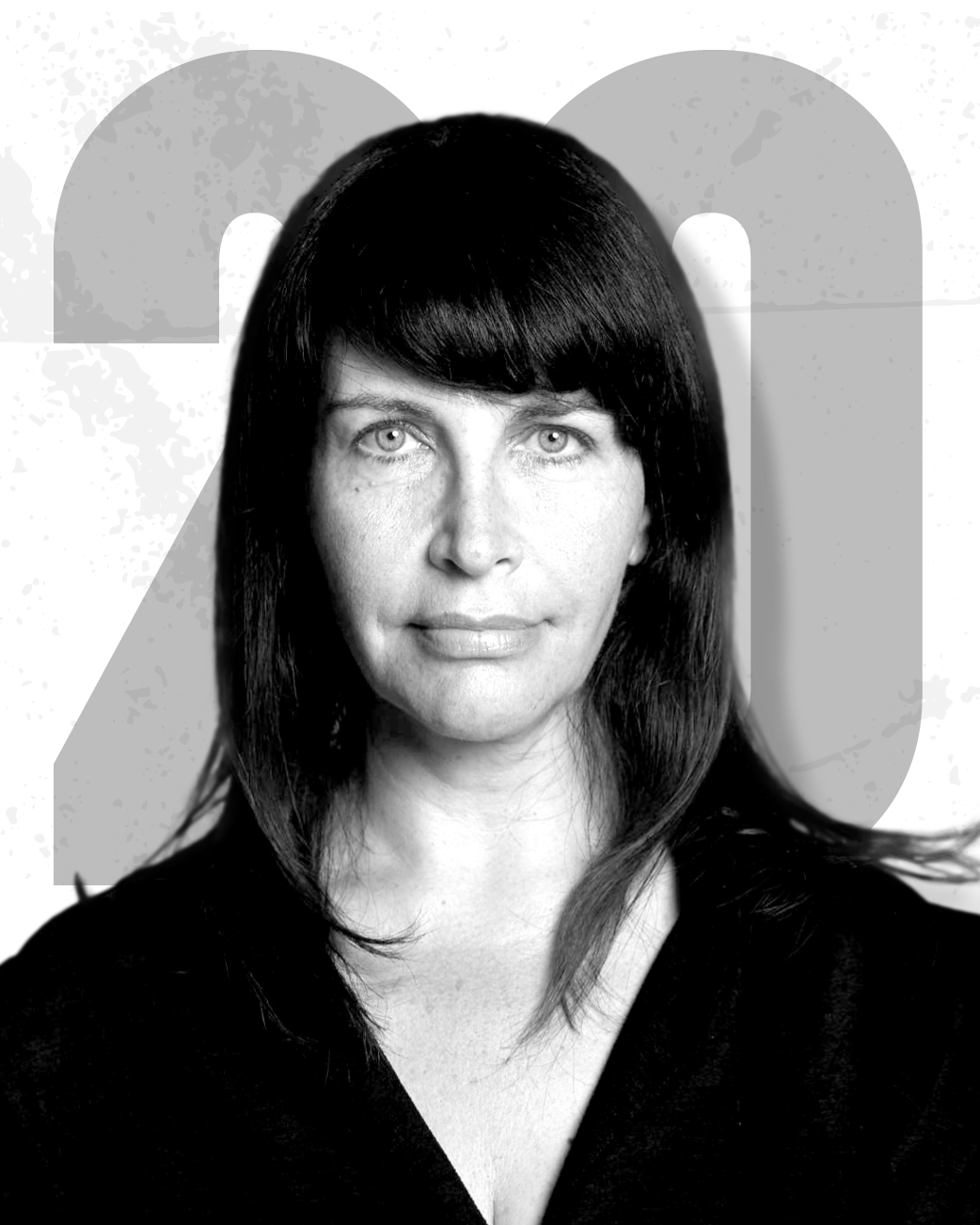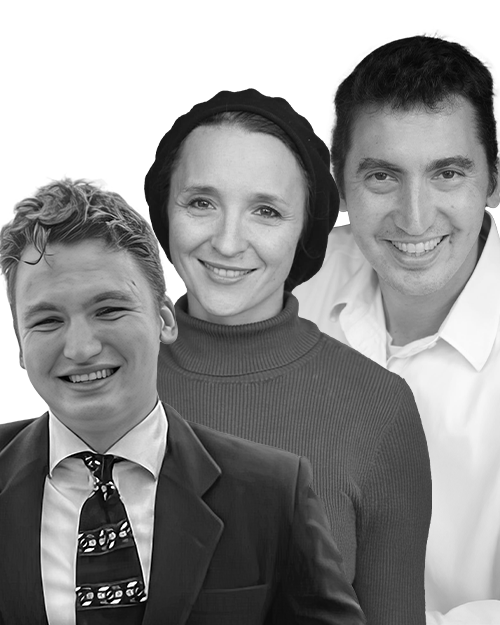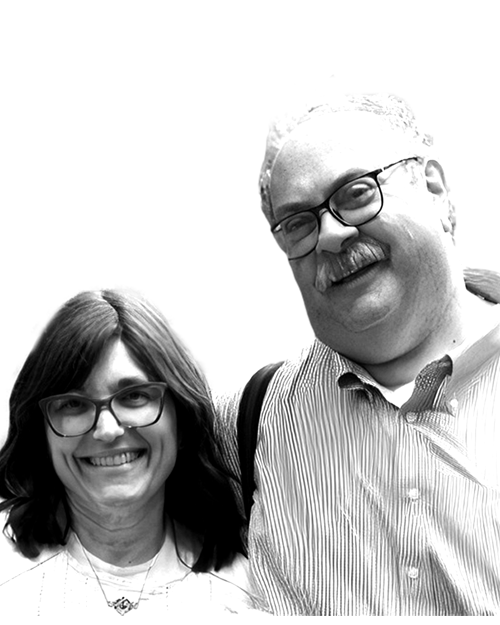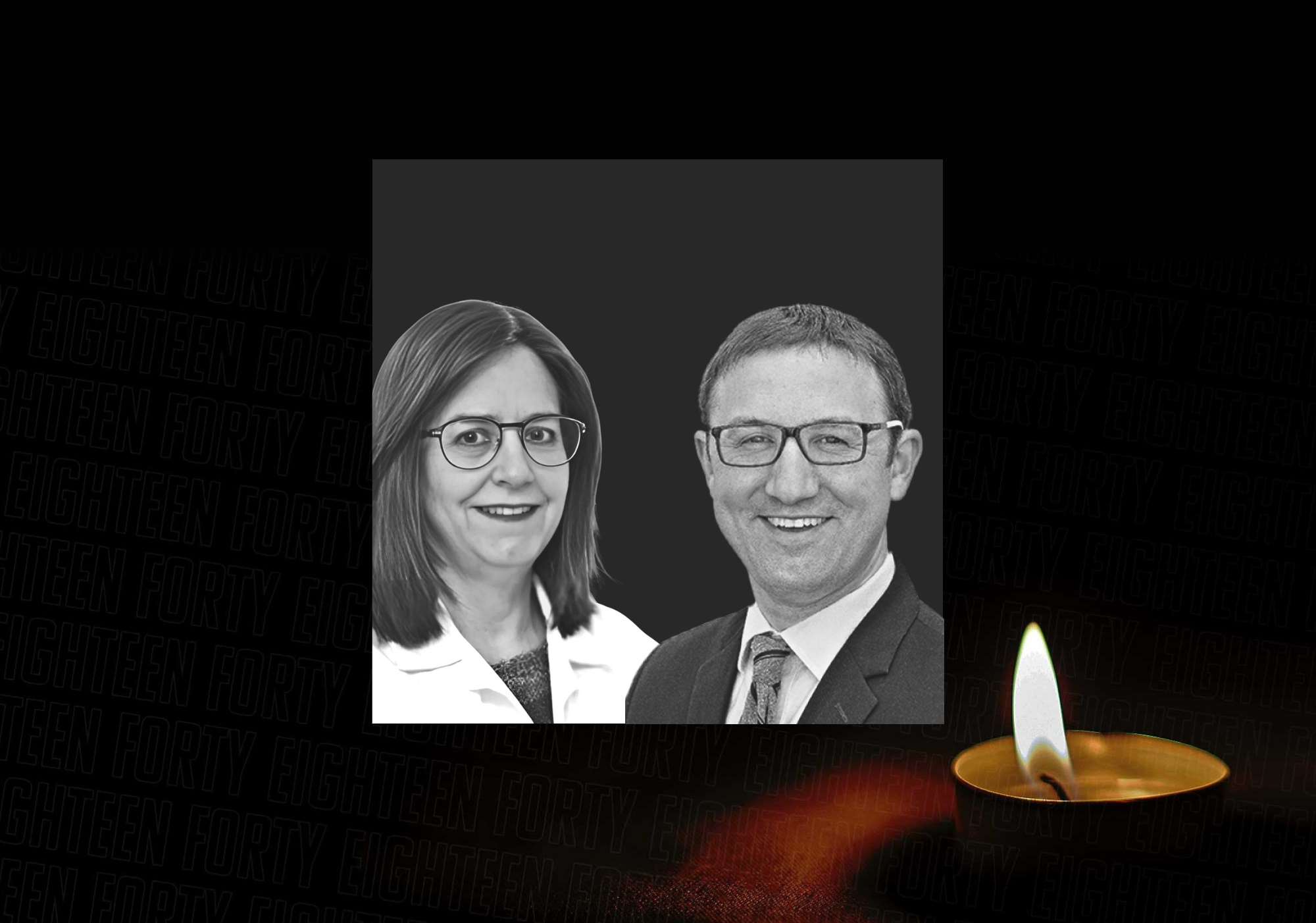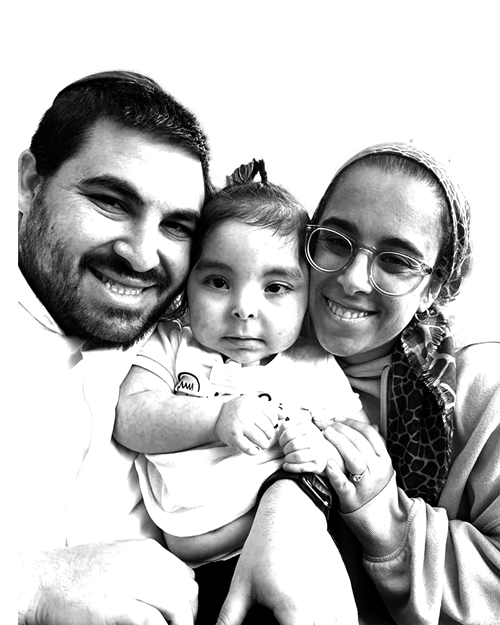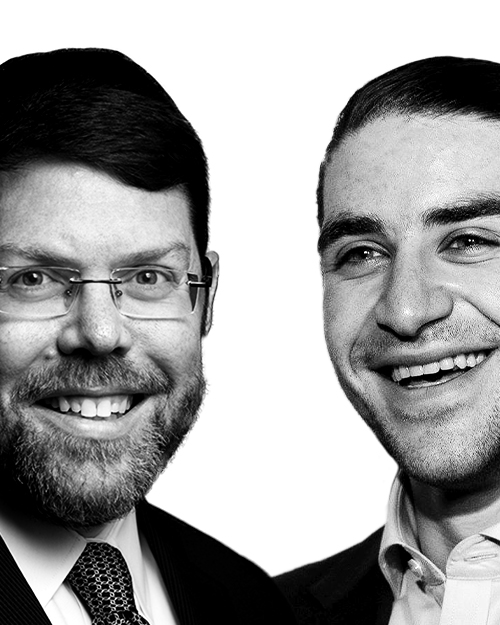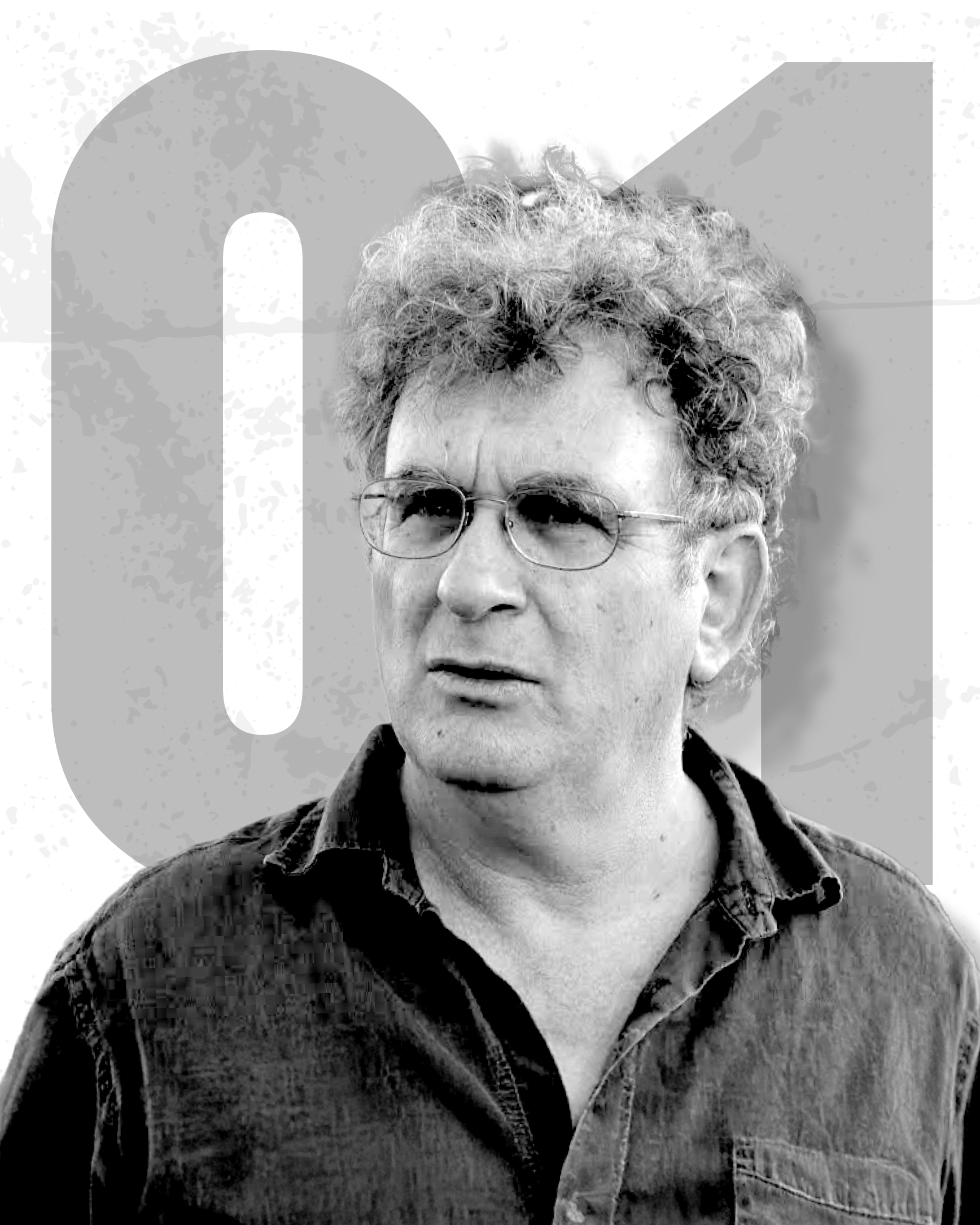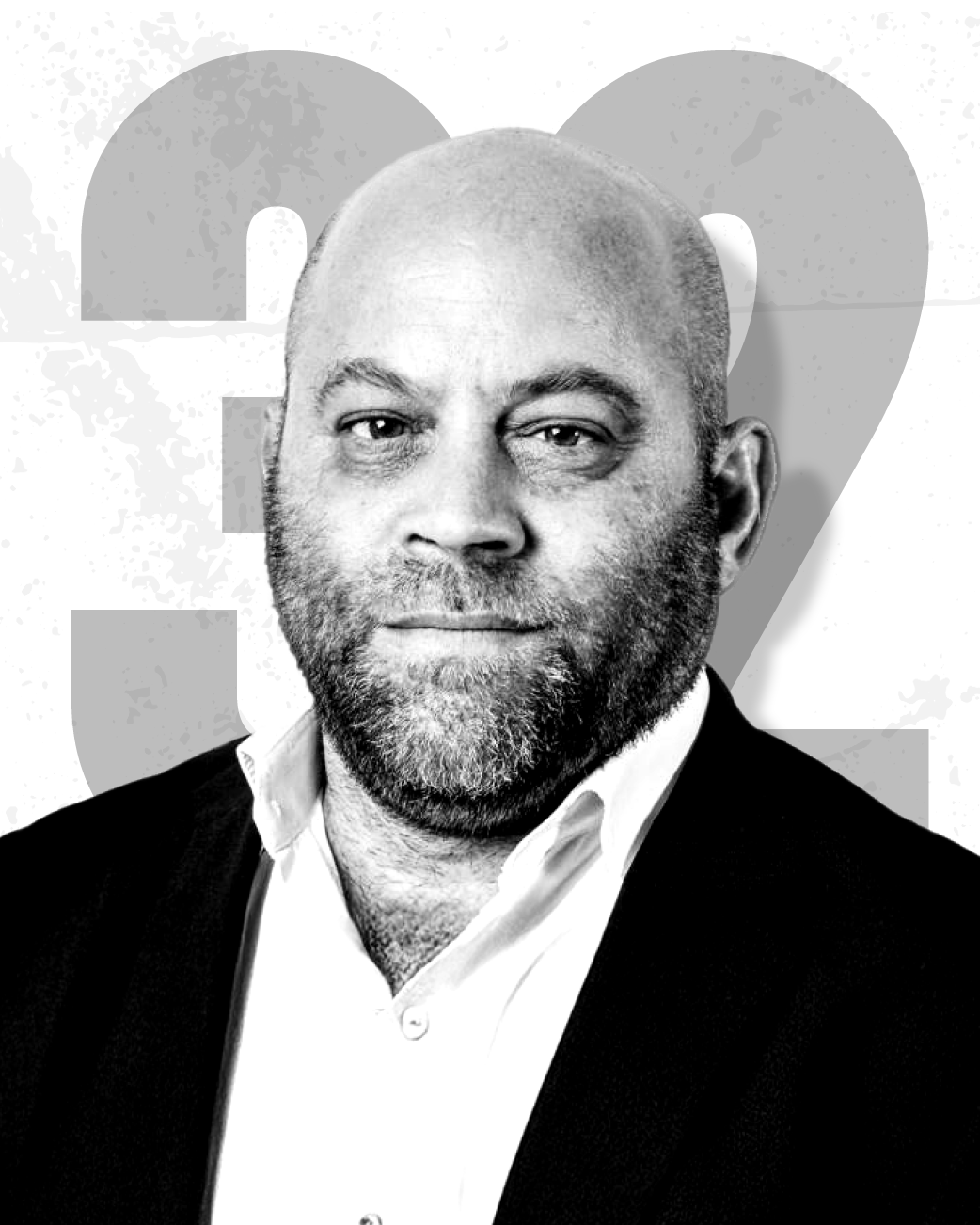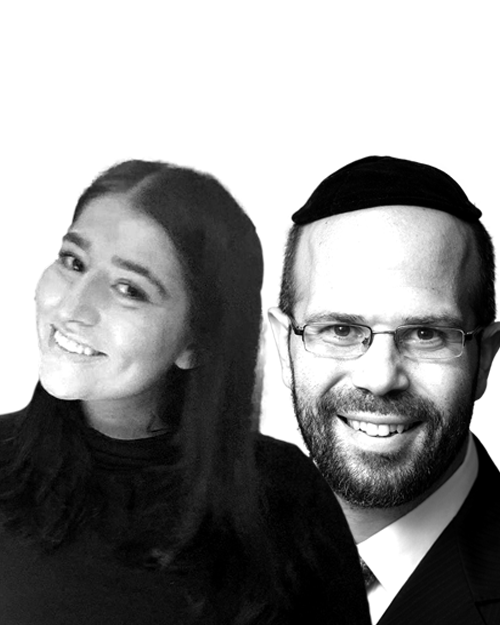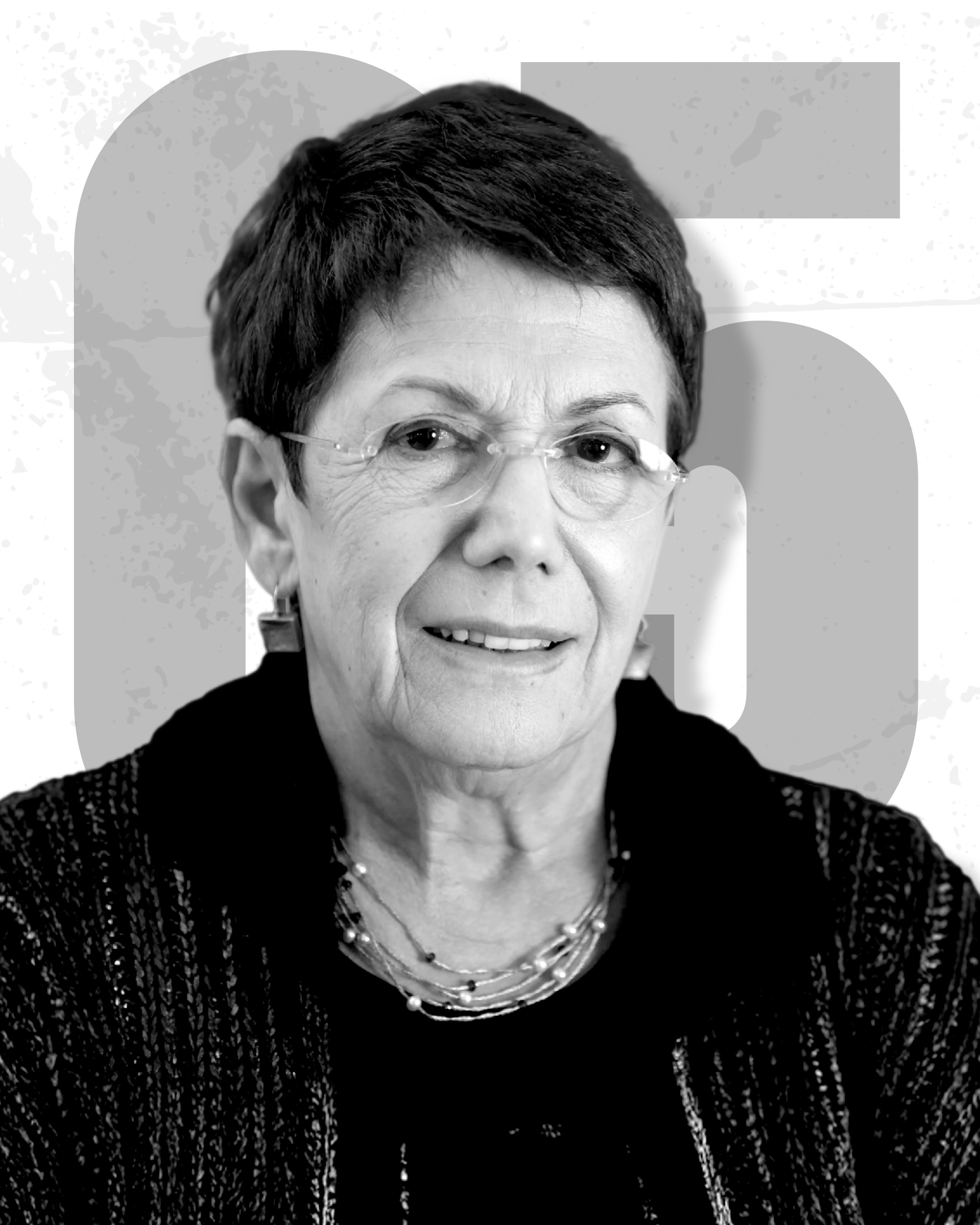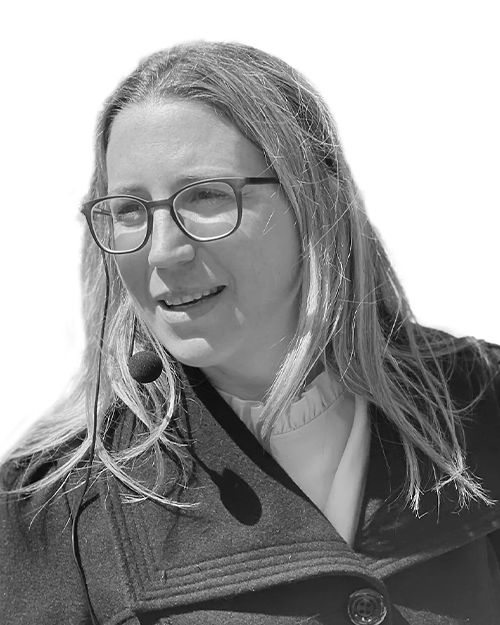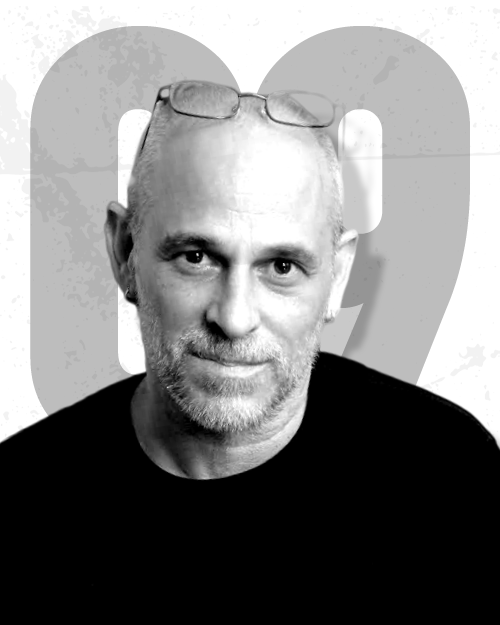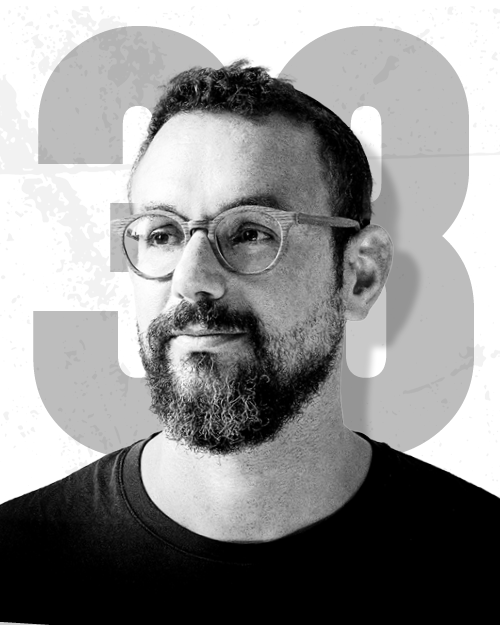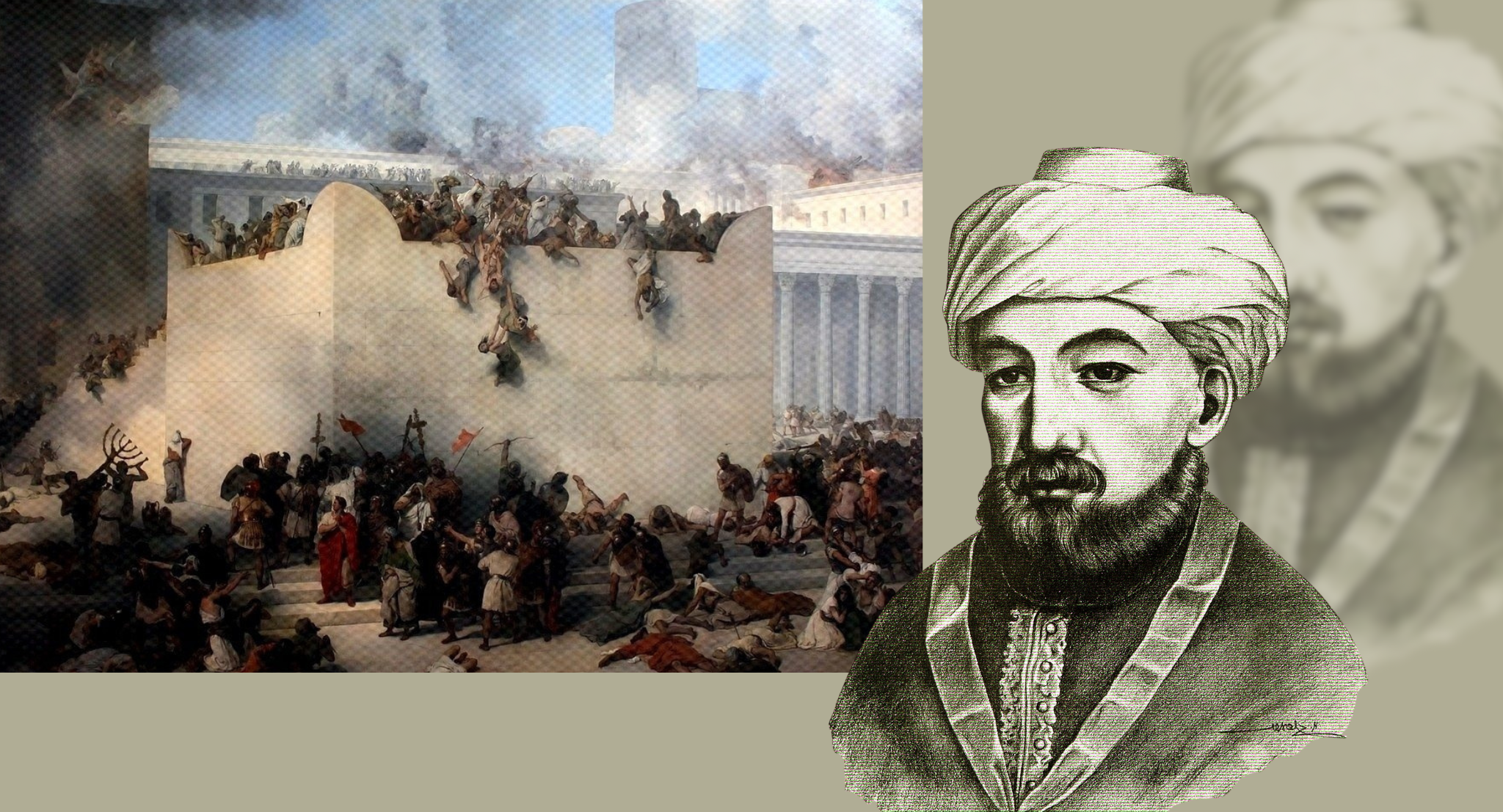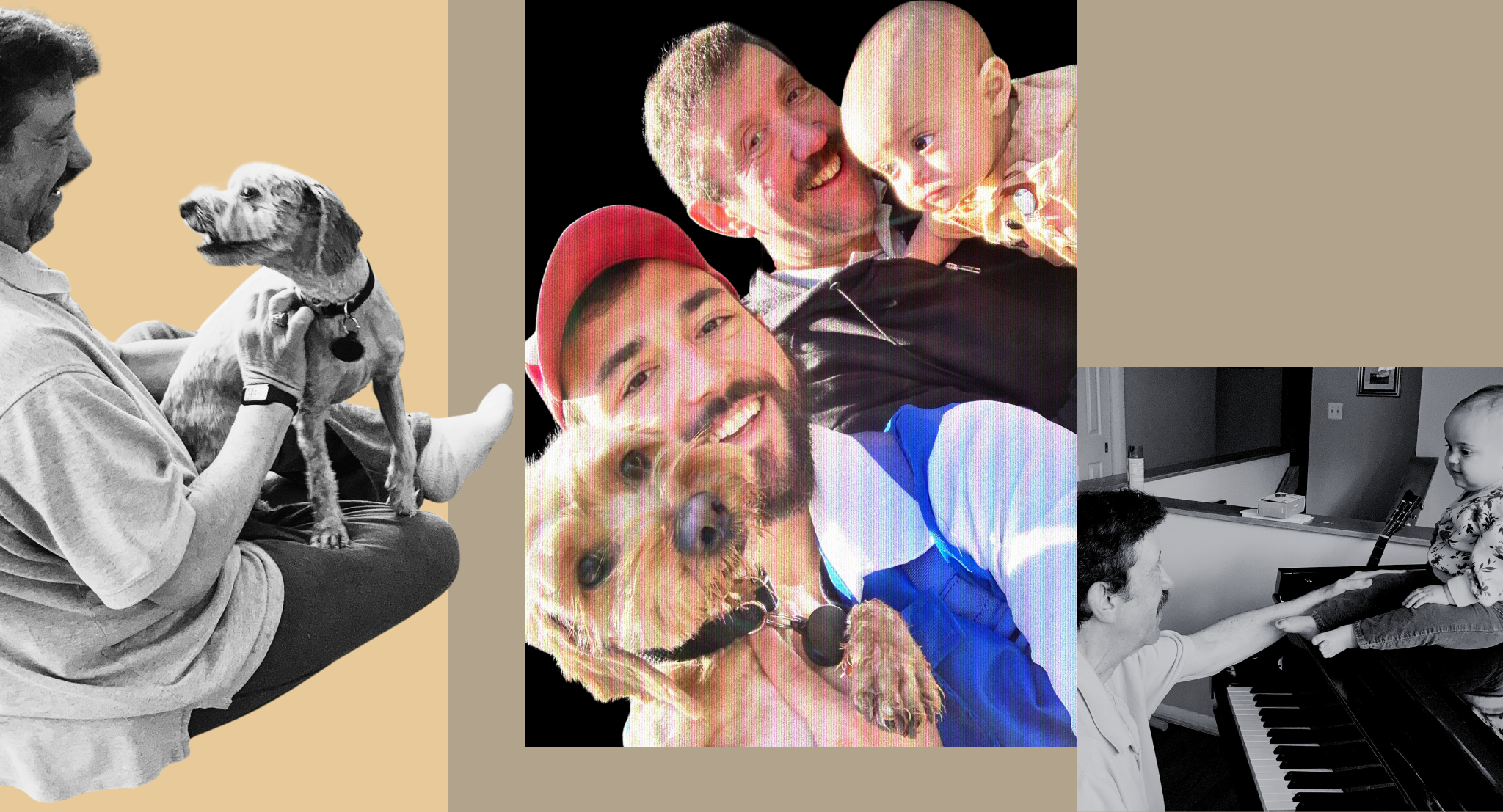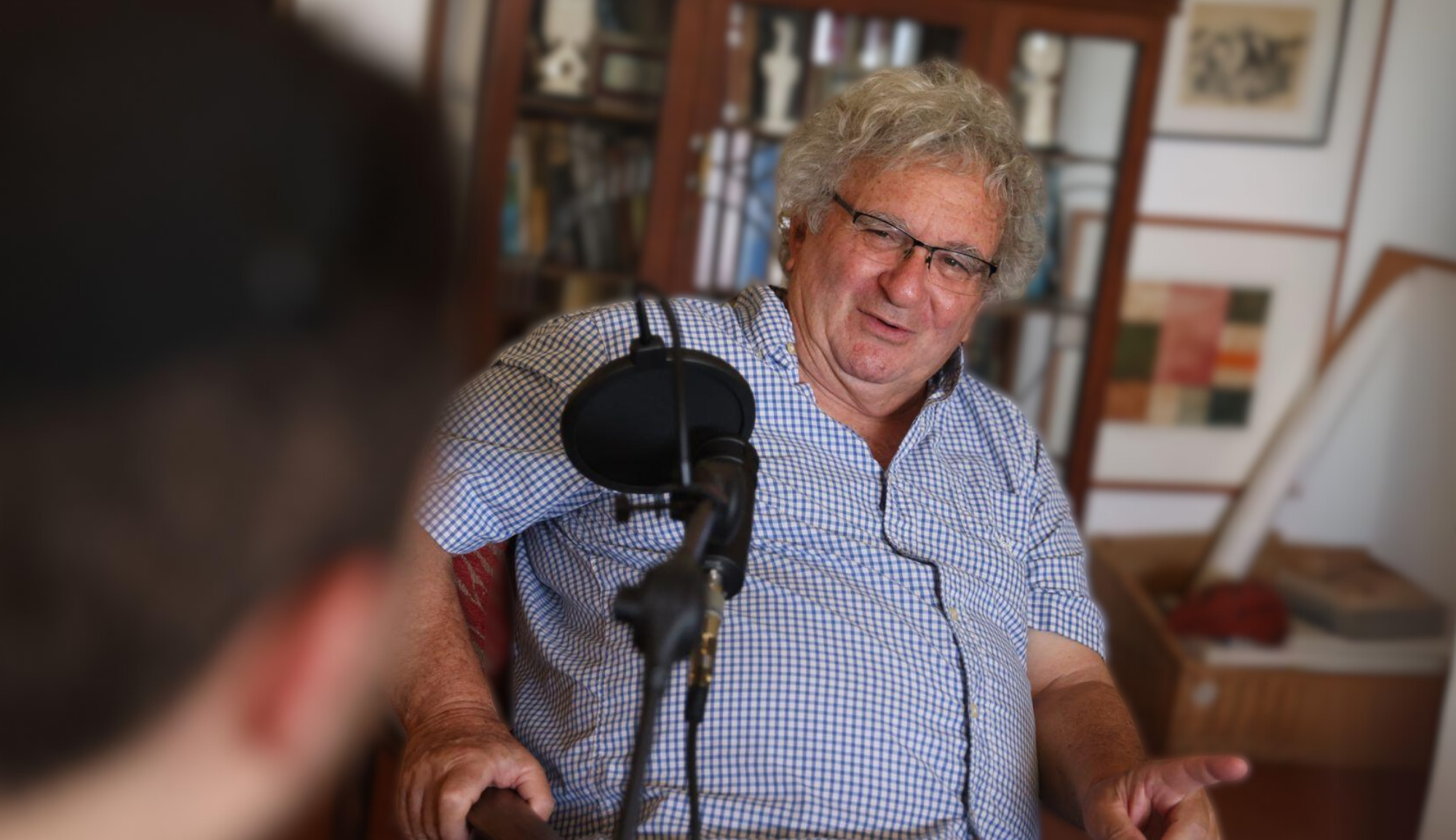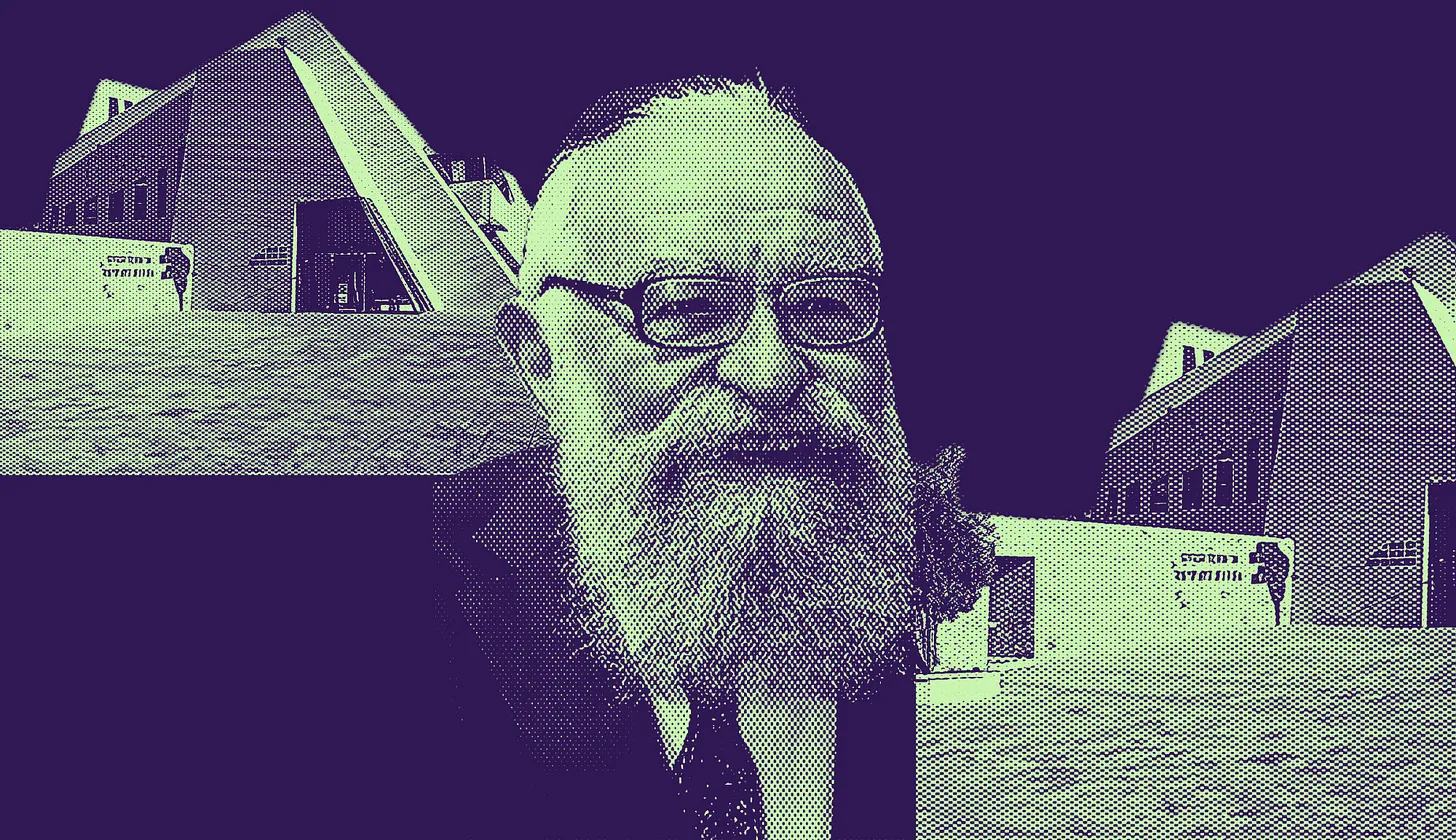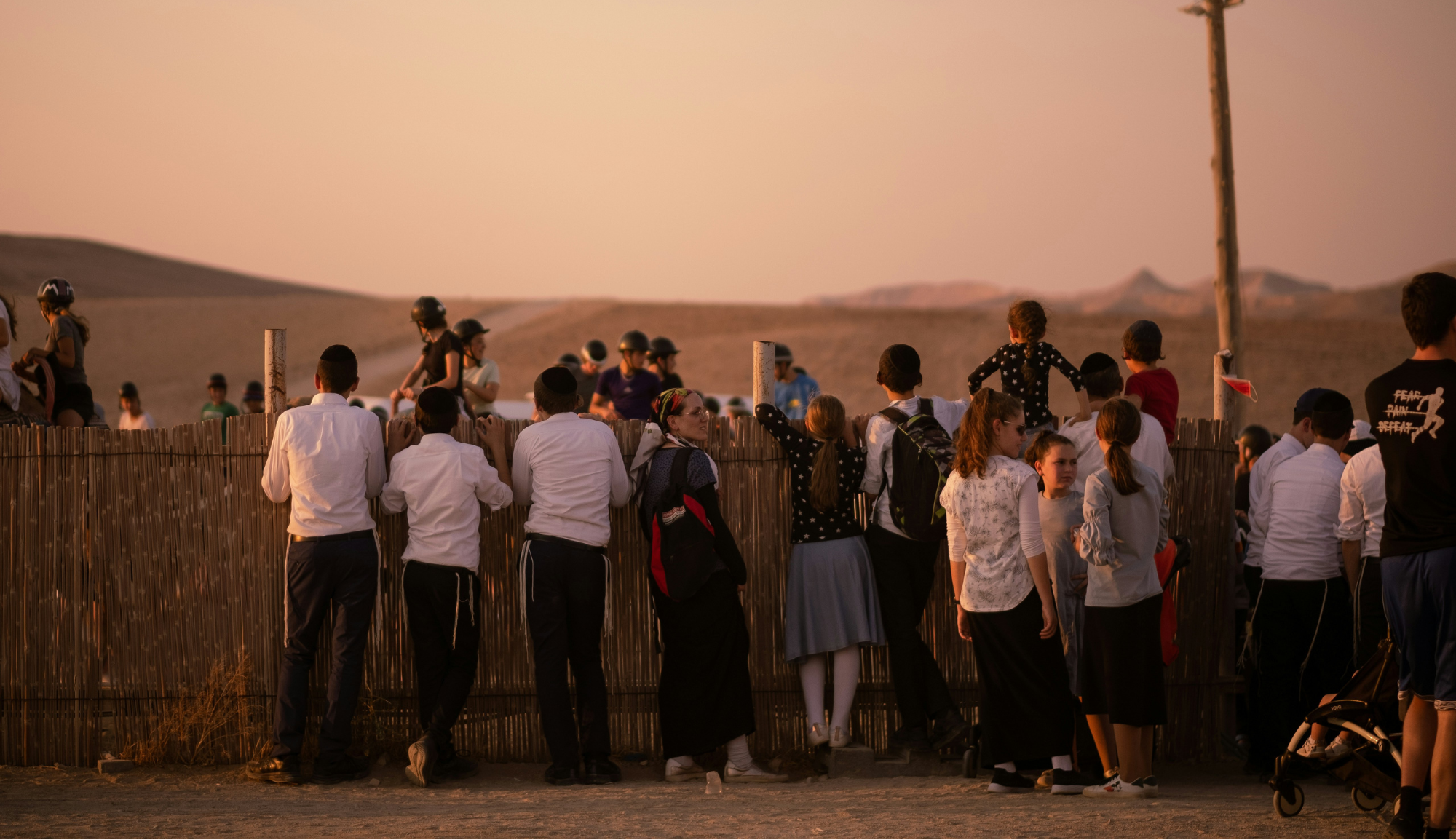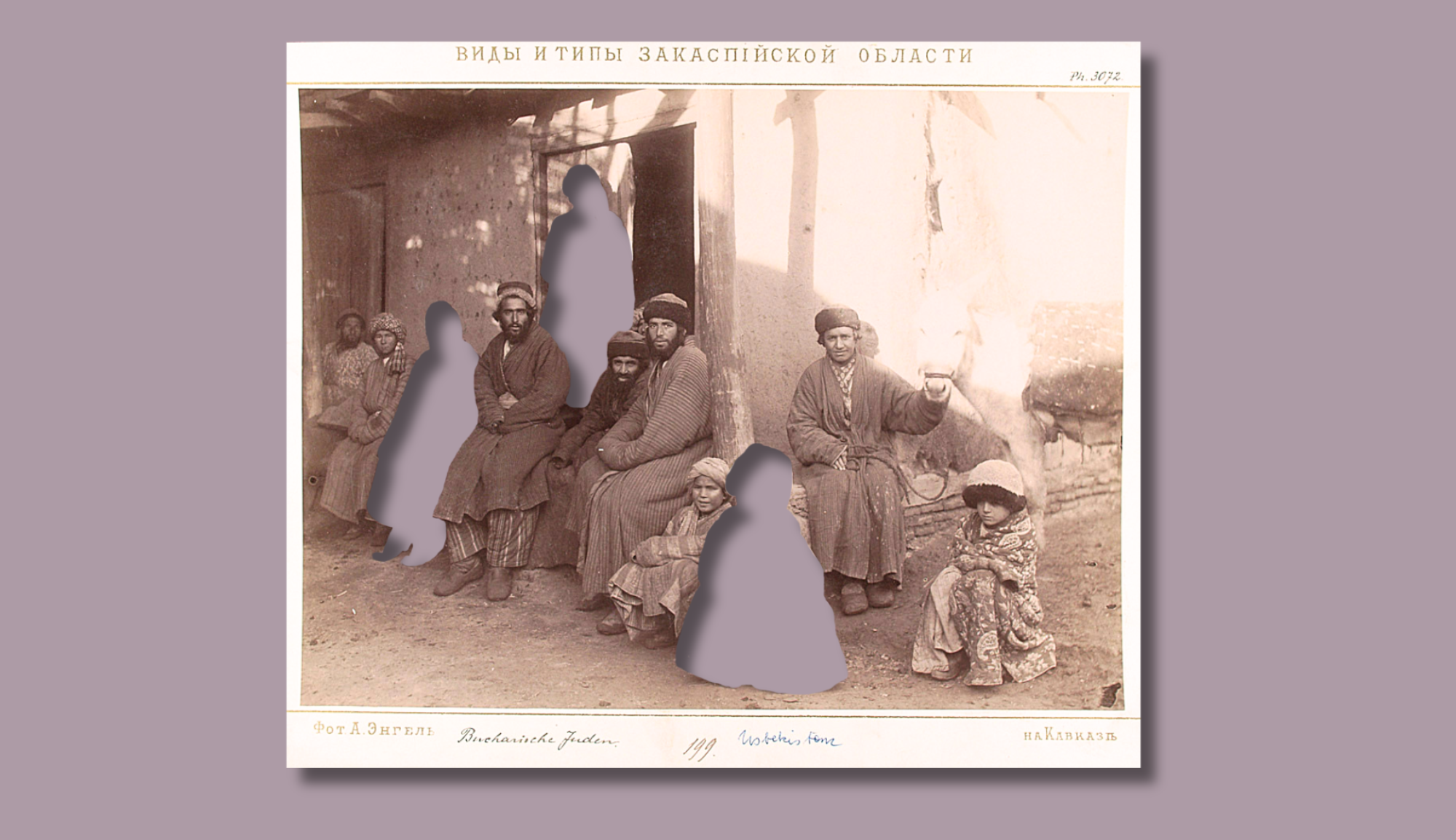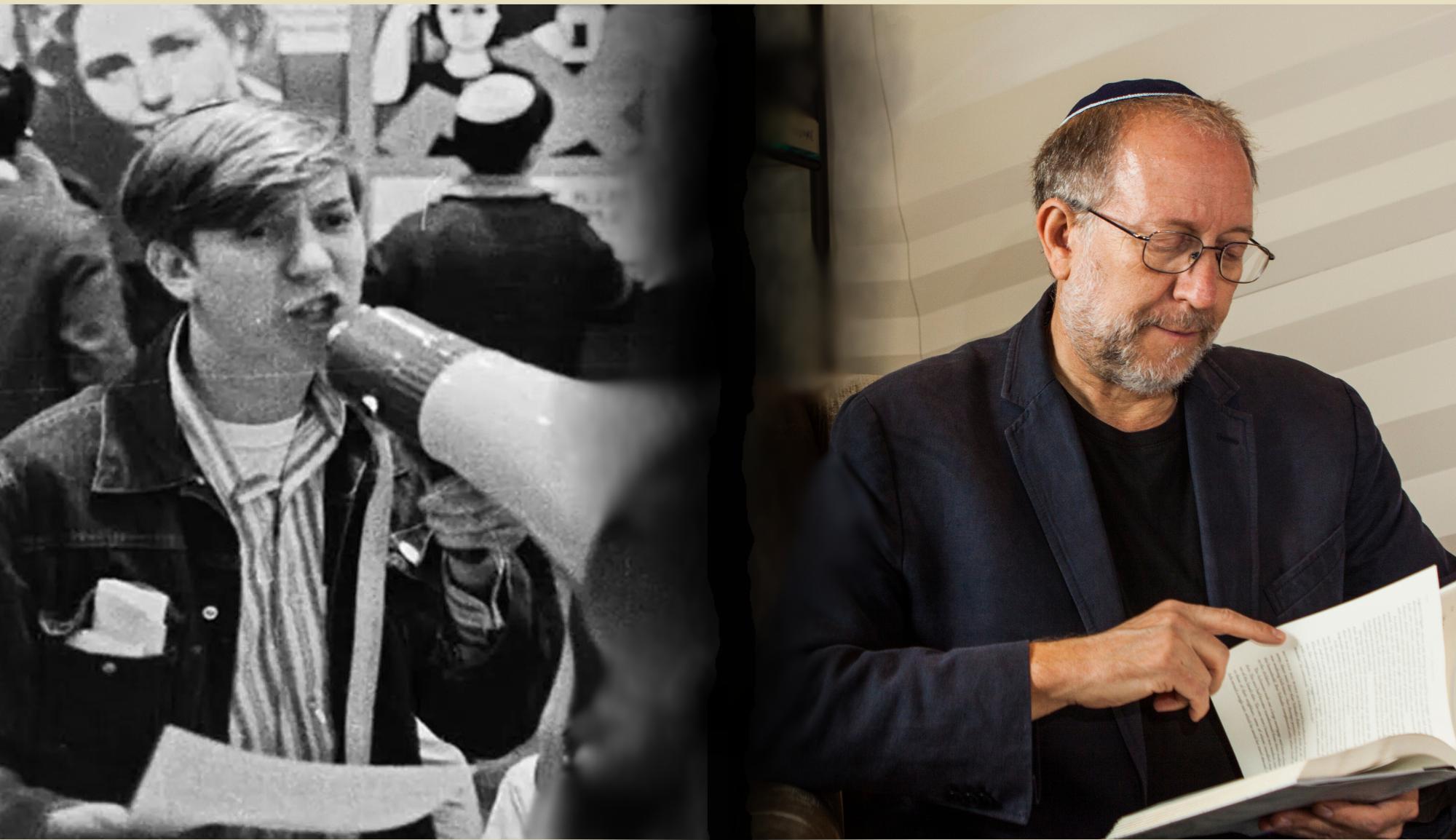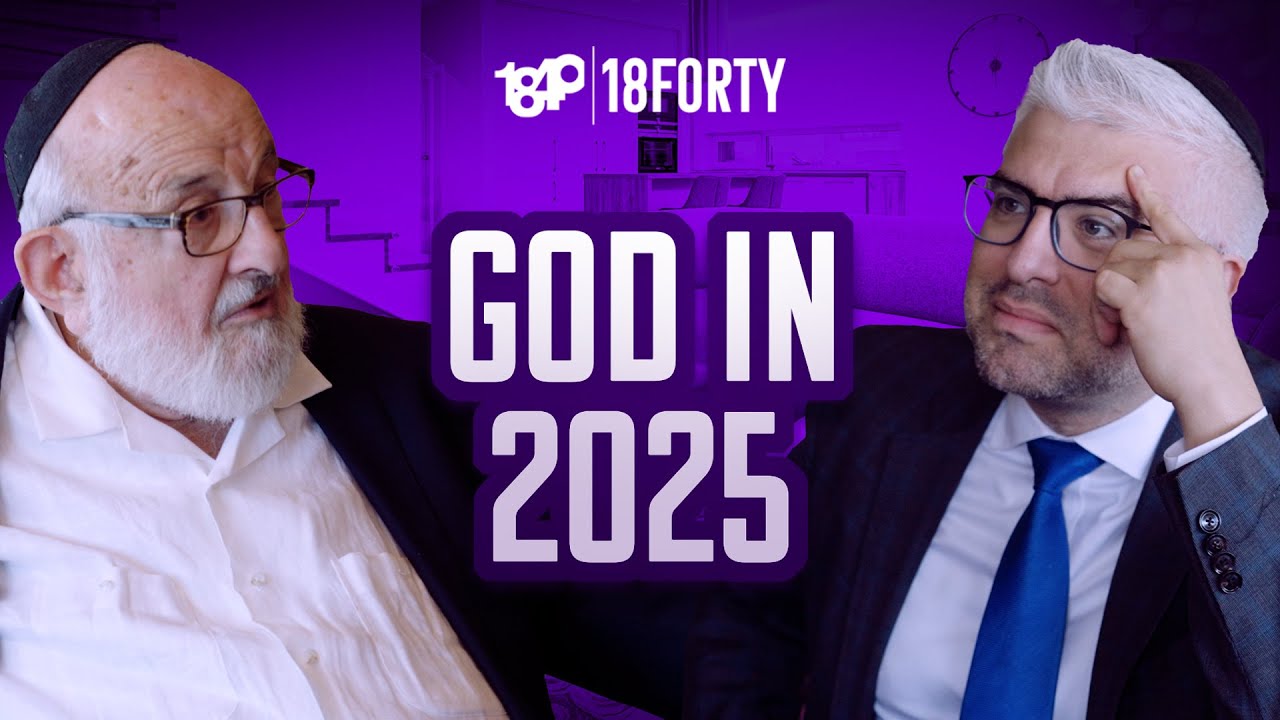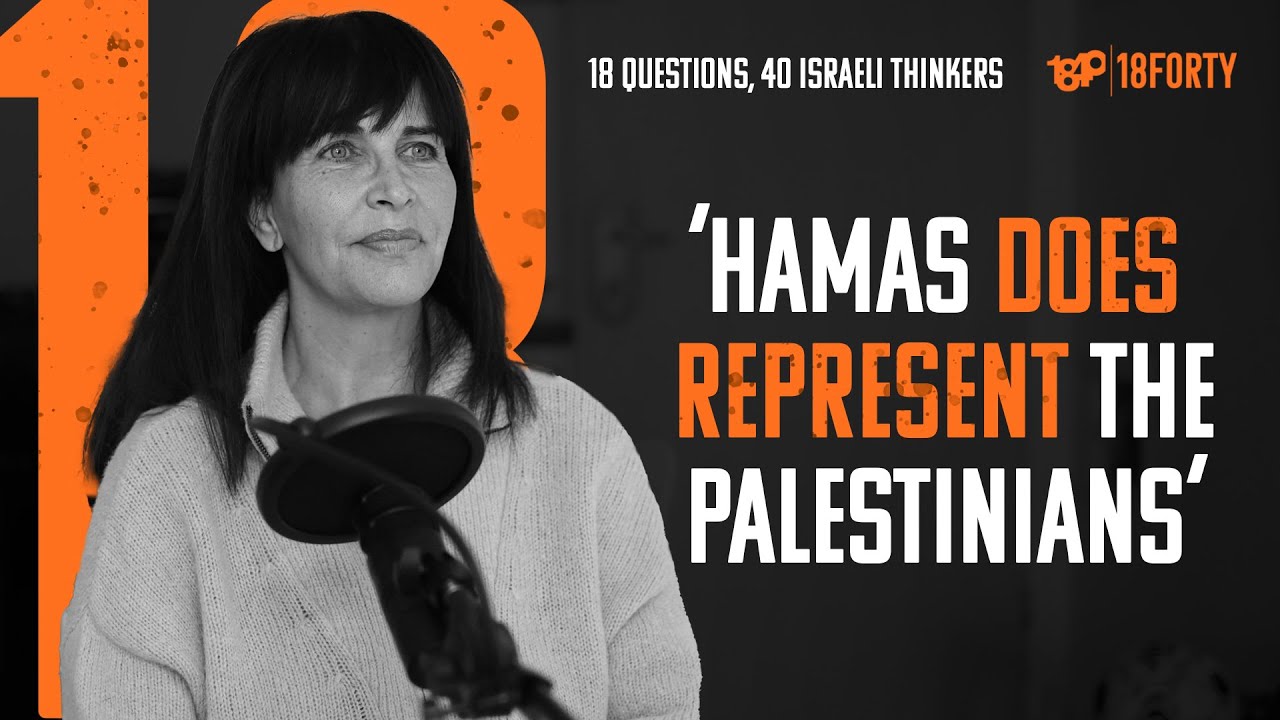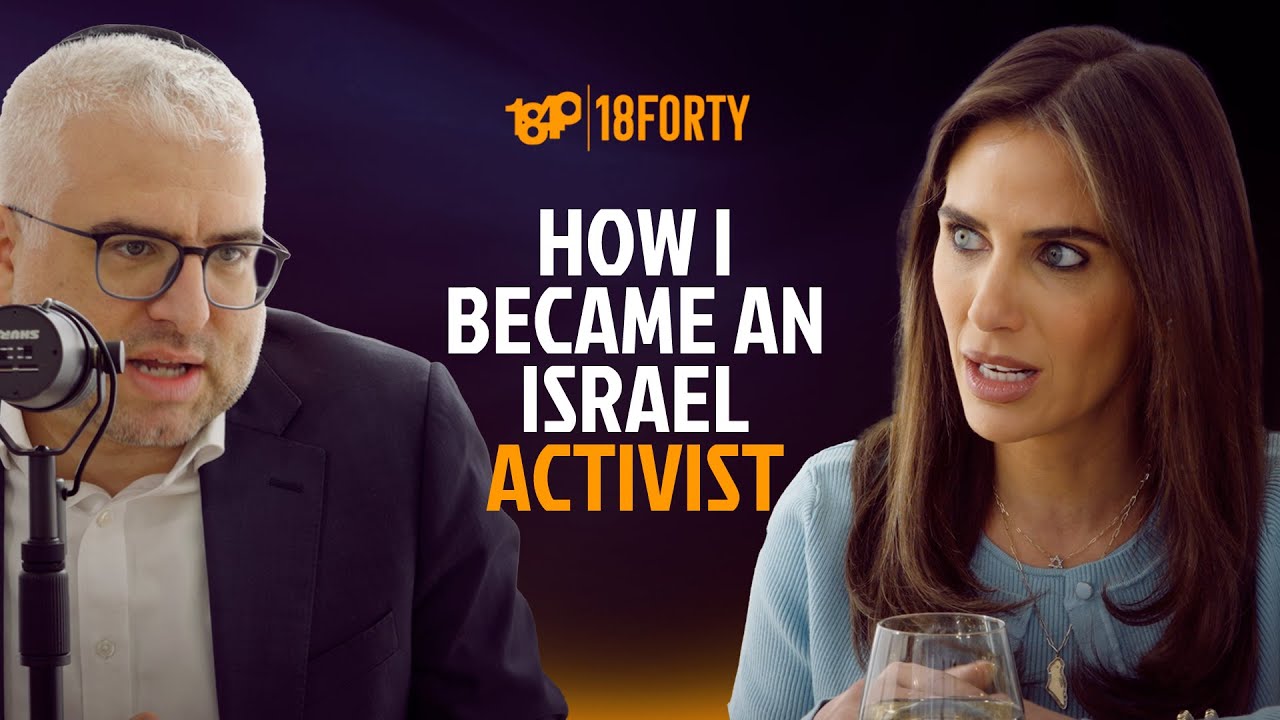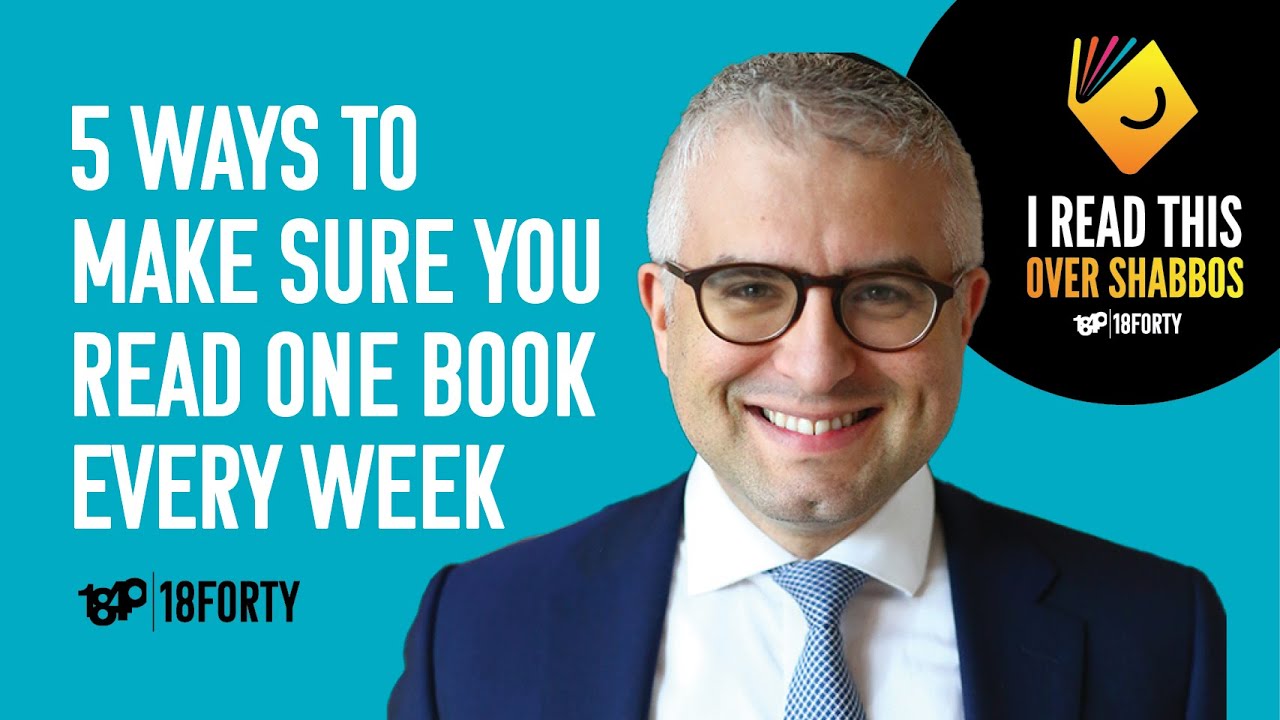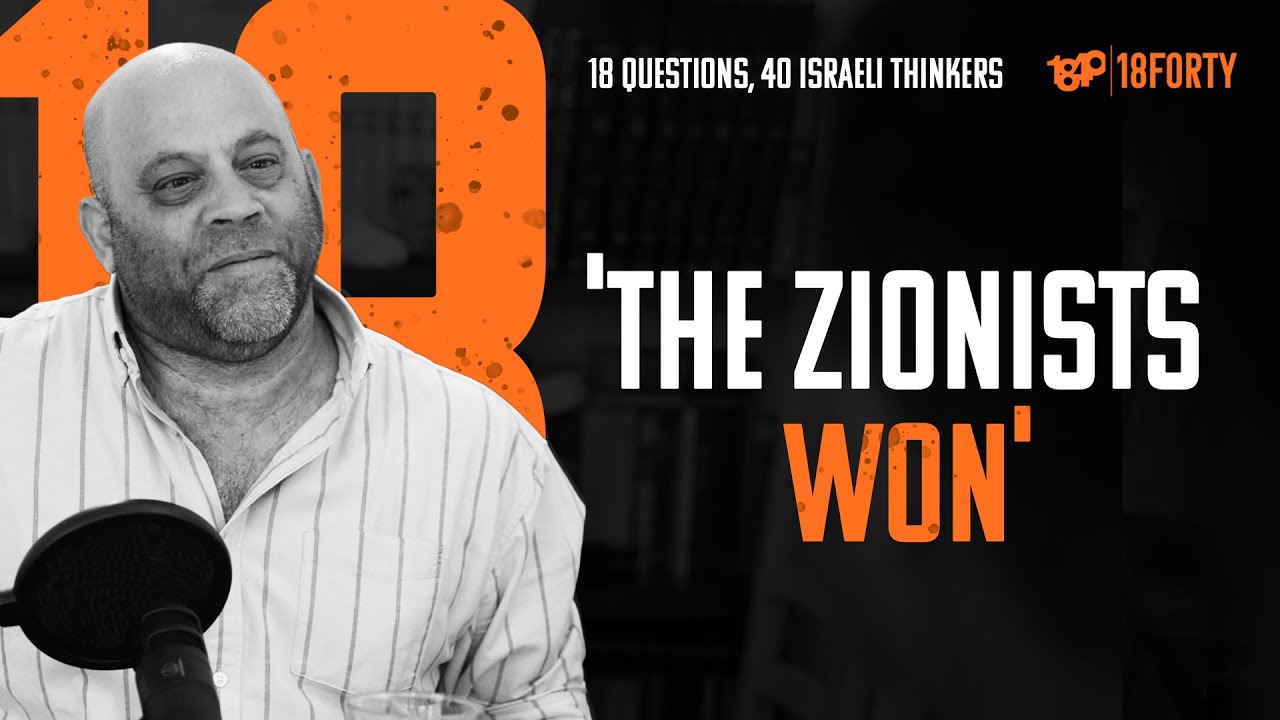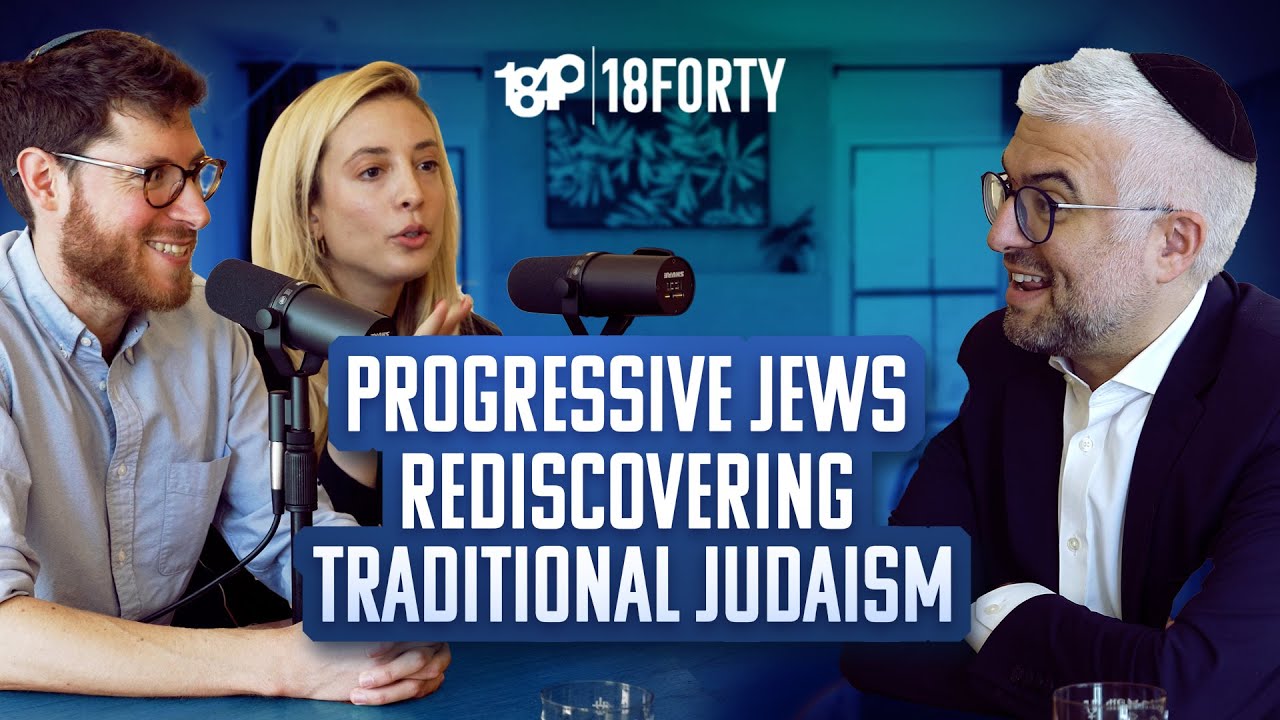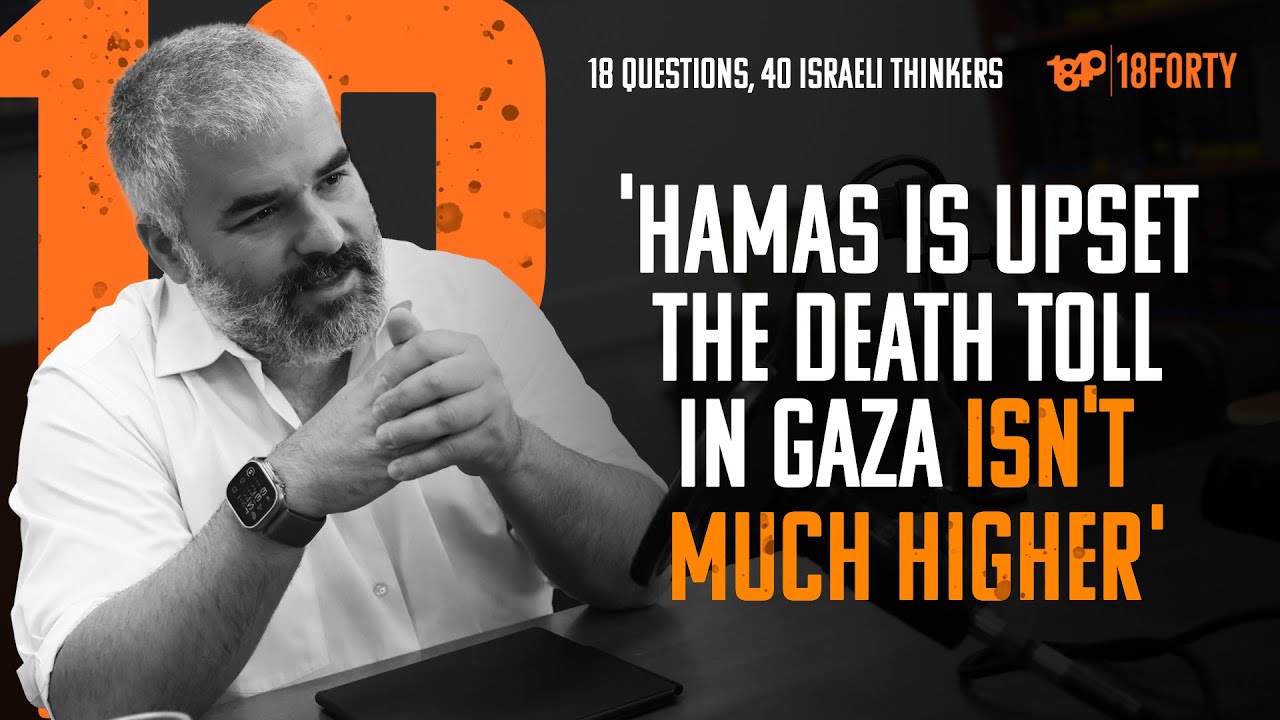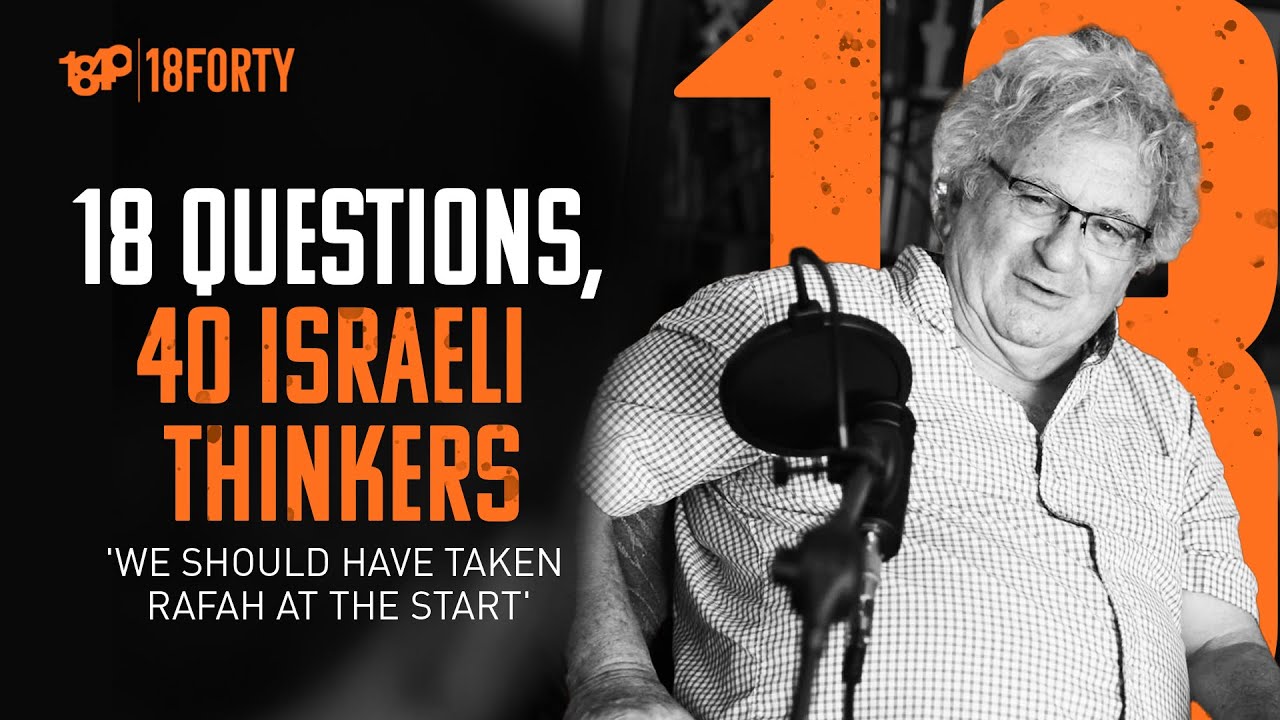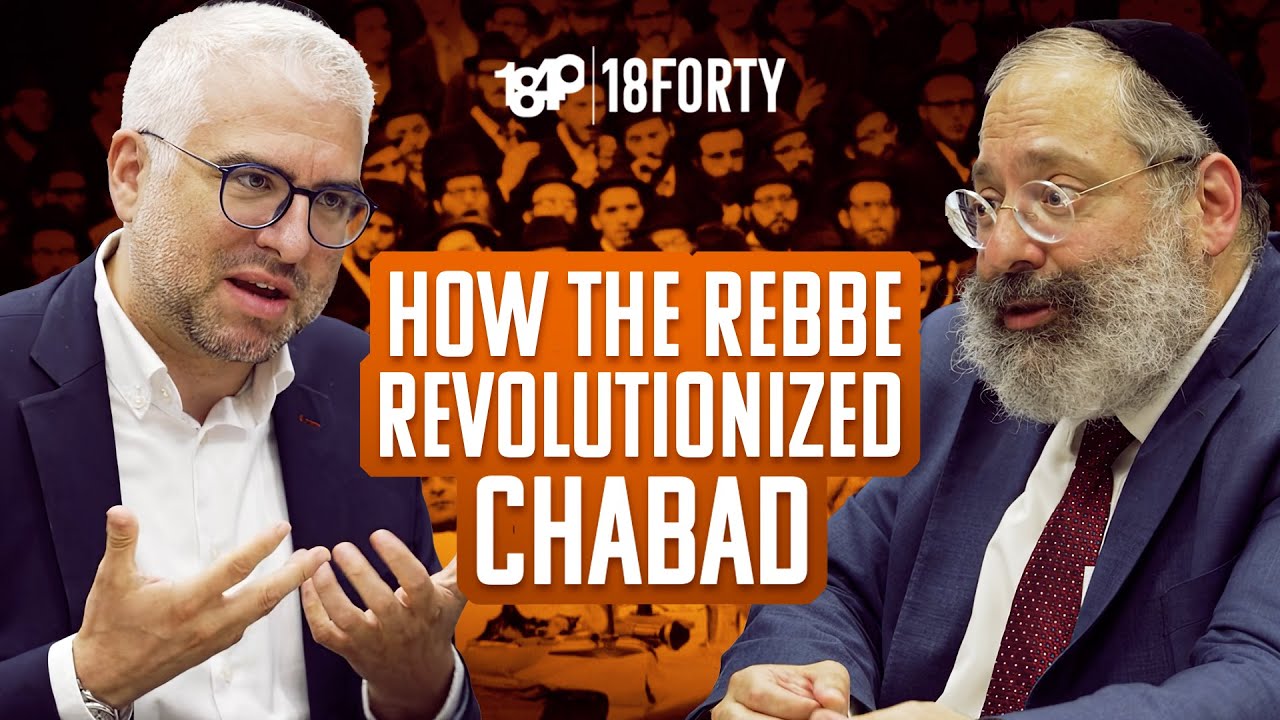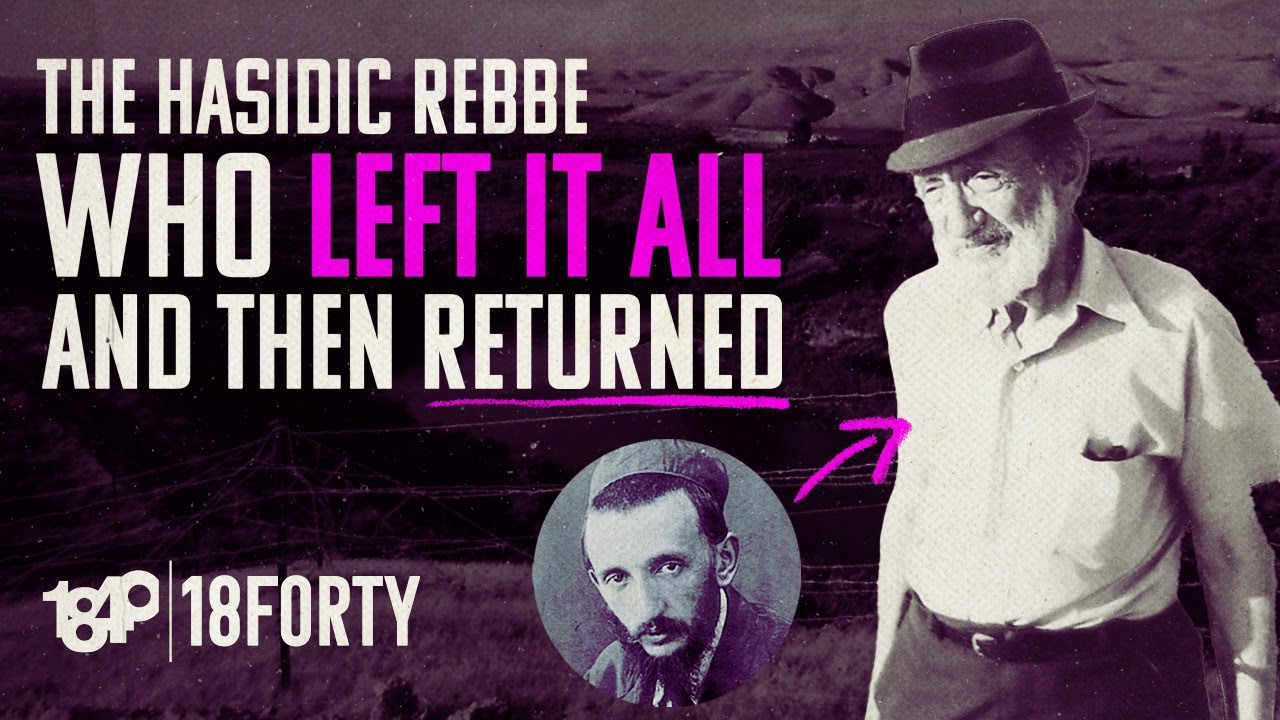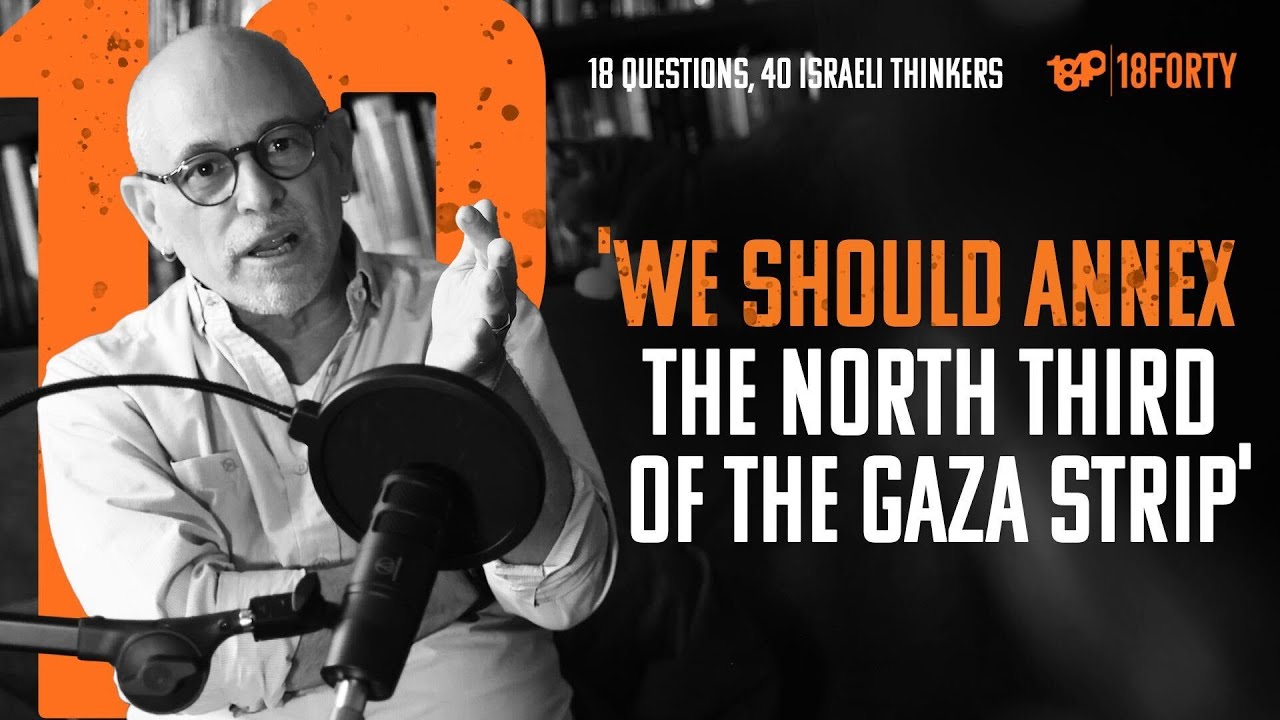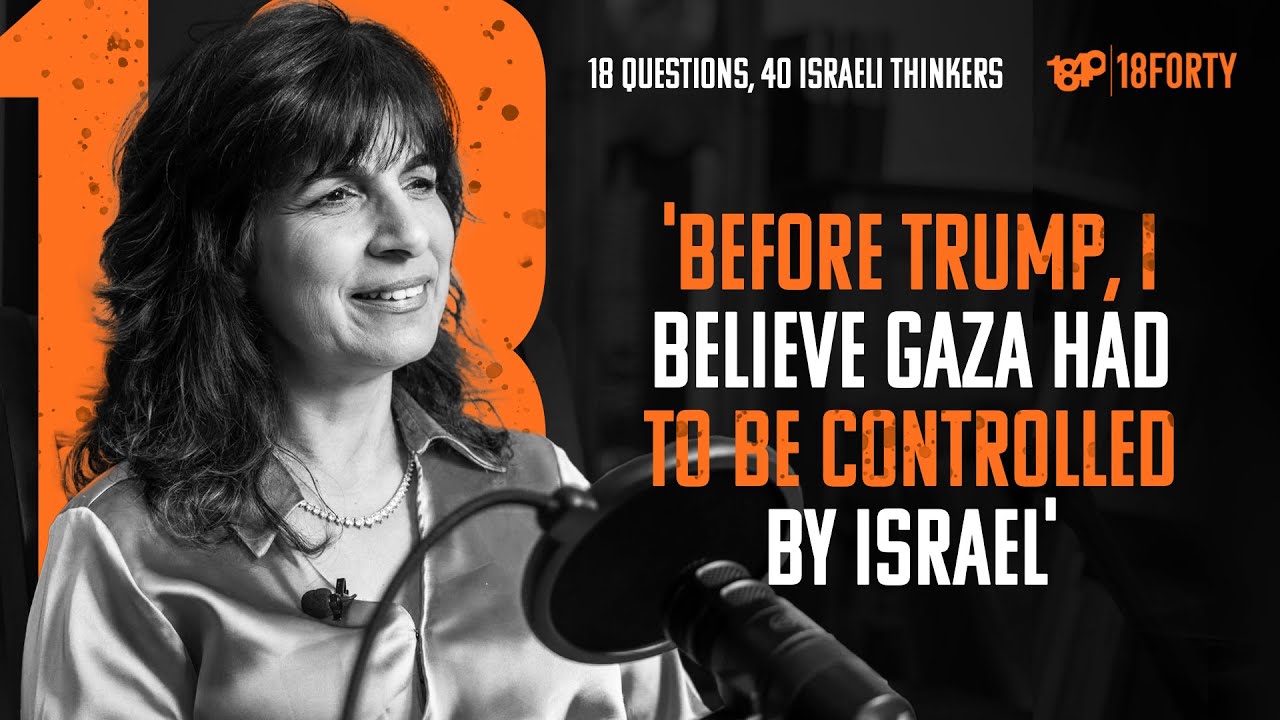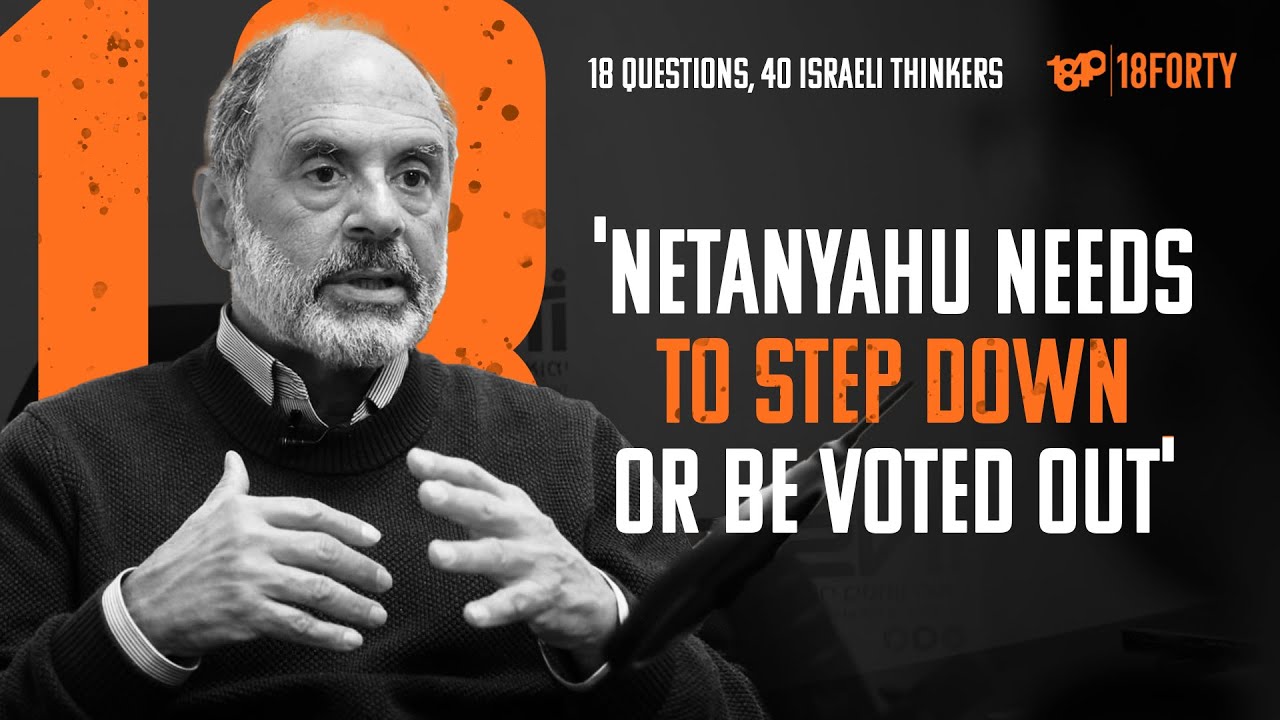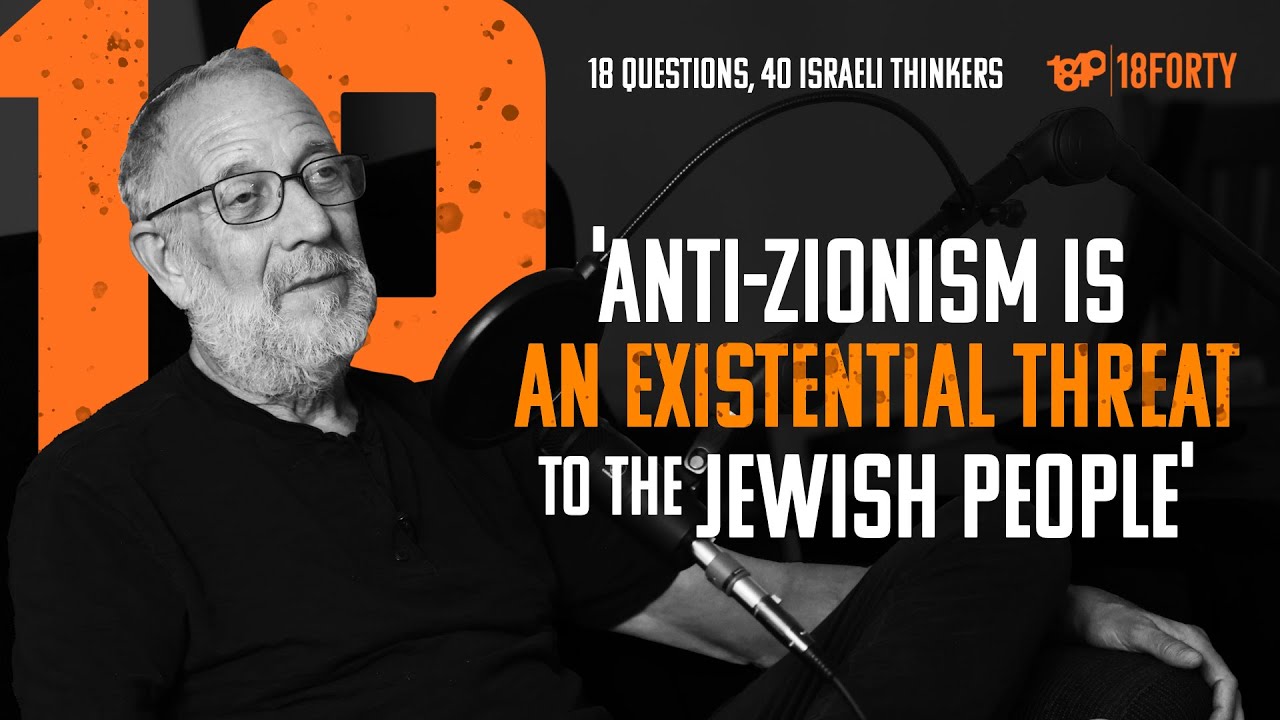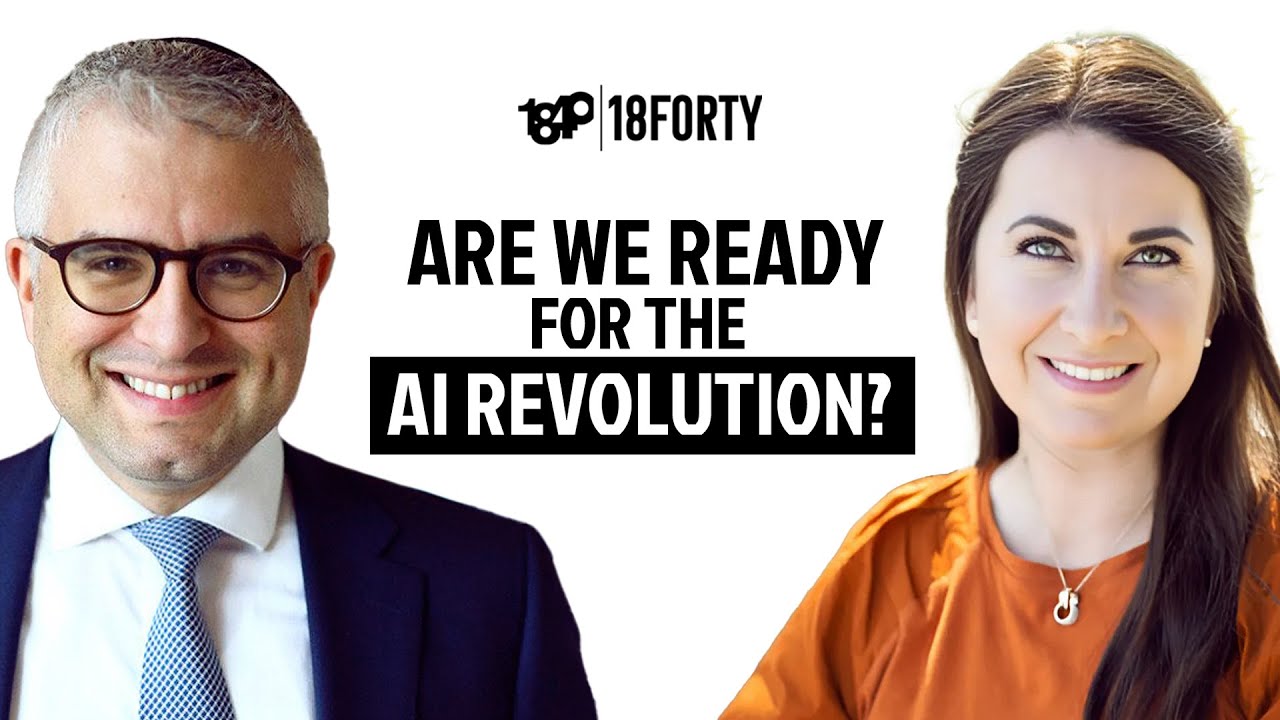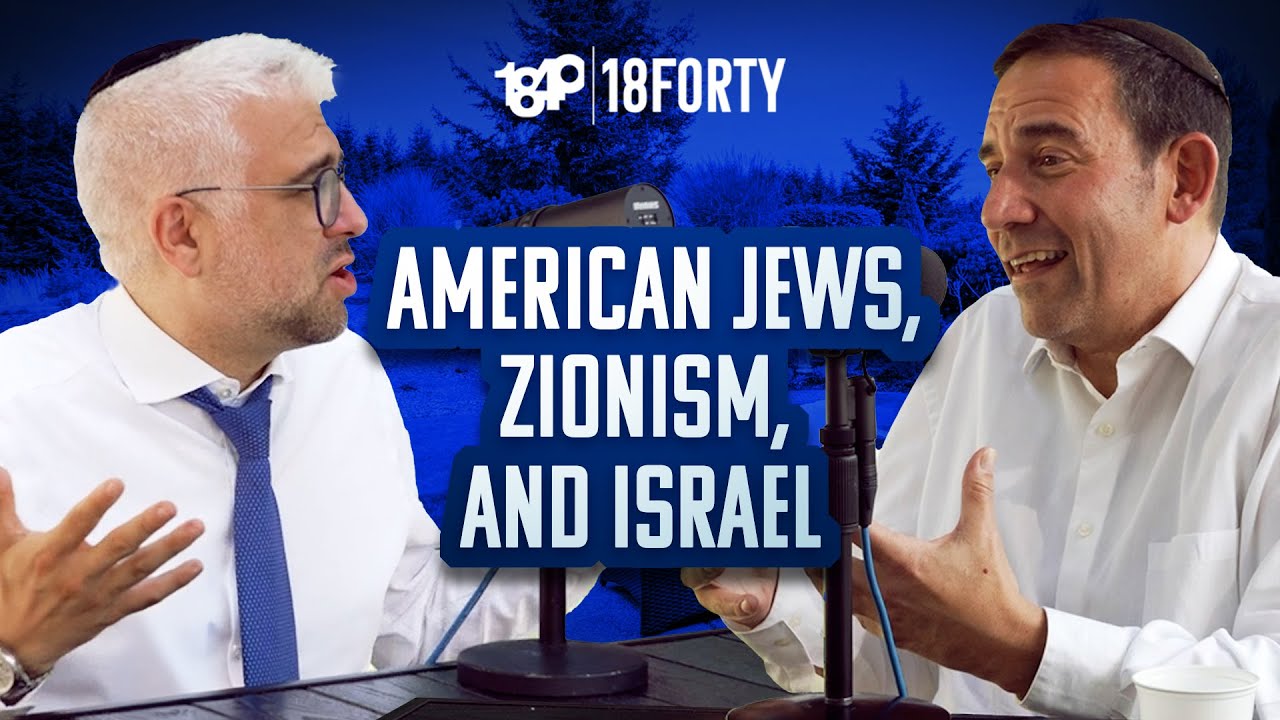
Summary
In this episode of the 18Forty Podcast, we talk to Ari Bergmann – PhD and financier – about the benefits of shemittah.
The current Hebrew year, 5782, is a shemittah year, a year when the land rests. This has extensive economic effects on Israel’s agricultural community, as farmers are not allowed to work on or profit from their land. Ari, as an expert in both Talmud and finances, weighs in on some important questions.
- What are the laws and logistics of shemittah?
- What is the Torah’s motivation for introducing shemittah?
- How do the laws of shemittah affect power differences created by wealth?
Tune in to hear a conversation about the shemittah year.
Ari Bergmann is the founder and managing principal/CIO of Penso Advisors LLC, A New York-based manager and advisory boutique specializing in derivatives structuring/trading and systemic risk management. Ari attended Ner Yisrael, holds an MA and PhD in comparative religion from Columbia University, and has taught at Yeshiva University, Columbia University, and the University of Pennsylvania. Ari lectures widely on the topics of finance, Talmud, and Jewish thought, and is beloved for his knowledge and depth.
Transcript
David Bashevkin:
Hello, and welcome to the 18Forty podcast, where each month we explore a different topic, balancing modern sensibilities with traditional sensitivities, to give you new approaches to timeless Jewish ideas. I’m your host, David Bashevkin, and this month we’re exploring wealth in the Jewish community. This podcast is part of a larger exploration of those big juicy Jewish ideas. So be sure to check out 18Forty.org, that’s 1-8-F-O-R-T-Y dot org, where you can also find videos, articles, and recommended readings.
There are few guests that when they come on, I get a little bit nervous and apprehensive, and today’s guest is one of them, and that is because of his outsized influence he has had on my life. For those who have been listening to 18Forty from the very beginning, you’ll remember the first topic we ever did was the topic of Talmud. And one of our guests was my dear friend and mentor, dare I say my rebbe, and I’ll explain why that actually isn’t a good description of our relationship, Ari Bergmann.
Ari Bergmann is somebody who I grew up listening to his classes. He used to give a shiur, a Torah class, every Shabbos afternoon. He grew up a couple blocks away from me and as I’ve written about in the full 2020 issue of Tradition, I contributed an article called, “Jewish Thought: A Process, Not a Text.” It was part of their larger symposium on Jewish thought in the contemporary world. And I wrote an article about what drew me to the thought of Reb Zadok ha-Kohen of Lublin, the great Hasidic thinker who lived from 1823 to 1900. And I hope we get to do a full series on him and his contribution to my life and contemporary modern thought, which I think would be really, really fascinating. But what I did in that article was actually talk about how my orientation to Reb Zadok was really shaped through those teachers who brought me and introduced me to his work.
One of those teachers, it was really the first person who taught me in depth was my friend, Ari Bergmann. It’s really interesting. I’ve had two teachers in the works of Reb Zadok; one is Dr. Yaakov Elman, and the other is Ari Bergmann. Both of them introduced me to this kind of Hasidic thinker, but both of them independently, without any overlap, both ended up pursuing PhDs in Talmud. And there actually is a great deal of overlap between this unique Hasidic thinker and a PhD in the Talmud. Why would they be connected? But I’ll tell you in a moment about what drew Ari into the world of Talmud, specifically the academic study of Talmud. Ari completed his PhD at Columbia University and recently wrote a book which you can actually get for free online. It was published by De Gruyter and it’s called, “The Formation of the Talmud: Scholarship and Politics in Yitzhak Isaac Halevy’s Dorot Harishonim.”
And to explain Ari’s influence in my life, I really want to get back to my relationship to him. When he’s not around I call him my rebbe. I call him my rebbe because he really shaped the way that I approach Jewish thought. The term that I used in that article in Tradition magazine is consilience. The term consilience means the unification of all branches of knowledge. As I wrote, whether the humanities, social sciences, natural sciences or math, when all of the different disciplines of academic study of higher education of Torah thought are able to be woven together into one consilient, one integrated whole. That is the term coined by Edward O. Wilson in his 1998 book entitled “Consilience” that Ari really introduced me to look at Jewish history, to look at Jewish law, to look at Jewish thought and develop and weave together a tapestry that forms a consilient, cohesive whole.
Now you can check out that article, but the reason why I hesitate to call him a rebbe is because there’s something very hierarchical about a rebbe and that if you know anything about his contributions in scholarship and the way that he lives his life, Ari Bergmann like flees in the other direction when it comes to these hierarchies. He’s not a big institutional person. And I mean, by that, he doesn’t really work within formal Jewish organizations. He teaches, of course, in Yeshiva University, but he doesn’t really work in the Jewish nonprofit space, that’s never been what he does. He’s a businessman, an investor. He runs a fund called Penso named after Penso de la Vega, which you can hear more about on our first interview when we spoke about Talmud together, but Ari really eschews — and that’s the second time that I am using that term which I am only half sure that I’m pronouncing correctly — but Ari really flees in the other direction when it comes to that stiff, top-down hierarchical way of bringing change in the community.
And that’s why I’m hesitant to call him a rebbe because the way that he interacts and the way that I interact with him is really kind of like a substitute friendship. Now it’s not because I feel like an equal to him, far from it. Ari’s achievements in so many areas would be worth a lifetime, any single lifetime in my own. What he’s achieved in the world of Torah scholarship, what he has achieved in the world of what we call machshava, theological ideas related to Torah, what he’s achieved in the world of academic Jewish studies, a PhD from Columbia, what he’s achieved in the world of business; any one of those areas is more than enough, for me at least, for one lifetime. But the way that he relates to people and this is really why he’s so influential, it really has this bottom-up graciousness where he’s genuinely curious and wants to know how can we construct and build ideas together. It is not this hierarchical, “I am in this space and have accomplished and have all these achievements and you’re down there below. And please just sit back and listen to me.”
He really brings in as many ideas, people, individuals into his life, taking that idea of consilience of not just different disciplines, but different people at all different forms of life and weaving together into this grand bottom-up tapestry that’s able to create this beautiful edifice of ideas that is able to propel society forward. And this is really the core of his work as it relates to the Talmud. Again, his book is called, “The Formation of the Talmud: Scholarship and Politics in Yitzhak Isaac Halevy’s Dorot Harishonim” and what his book is about is how was the Talmud formed and most people usually look at the formation of the Talmud as this top-down editor, somebody came and very carefully edited the Talmud, page by page, word by word, and everything was very carefully edited.
And what Ari endeavors to show is that this theory, which was primarily proposed by Yitzhak Isaac Halevy who authored this tome, several volume work called “Dorot Harishonim.” He wanted to prove that it had this top-down leadership in the way that the Talmud was formed and he had very political reasons because he wanted to reimagine the way leadership worked in the Jewish community through his founding of Agudath Israel and specifically through the rabbinic body of Agudath Israel known as a mo’etses gedolei hatorah. And he wanted to imagine a Jewish world, which operated from this top-down leadership, this hierarchical leadership and through that hierarchical leadership, that is the way change is brought in the community. And what Ari discusses and really proves in his book is that’s not in fact how the Talmud actually came together.
There’s quite a bit of bottom-up movement in the way that the Talmud was formed and which is why there’s some measure of skepticism that maybe it was the modern political goals of Yitzhak Isaac Halevy and the way that he wanted to structure the Jewish community through Agudath Israel and through a mo’etses gedolei hatorah, a unifying body of rabbis that could really bring change to the community.
Ari shows that maybe that’s not really always how it worked and there were a lot of people, even at the time when Yitzhak Isaac Halevy was suggesting this in the early 1900s, who also said, that’s not really how Jewish law and Jewish life evolves. Rav Kook, and even more famously, Rav Chaim Soloveitchik, the great Rav of Brisk, were hesitant for these political bodies to be at the head of the development of a Jewish society. They said, that’s not really how it works. There was something very bottom-up the way that Rav Moshe Feinstein once described in an interview in the New York Times where he basically said, nobody appointed me the leader of the Jewish people. Somebody came and asked me a question, and then another person came and they liked the answer. And a third and a fourth person came and there was almost a symbiotic relationship where leadership seamlessly emerges and it doesn’t have this political hierarchical stamp to it.
It’s not any official role, institution or position that gives them power, but it is through their integration within the greater body of knesses yisrael, the larger body of the Jewish people, through which the power of the Jewish community resides. So why are we talking about this now? We’re supposed to be talking this month about wealth in the Jewish community. So why are we talking about this now? What has always fascinated me and why it was so important that Ari Bergmann, even though he’s already been a guest on this podcast, I wanted him to be the first person who is a repeat guest on the 18Forty podcast because he has done incredible work as it relates to shmitta, the seven-year sabbatical in which we rest the land of Israel and do not use it to produce profit and monetary gain, the land of Israel essentially becomes ownerless.
And this is a shmitta year in fact, and it is always fascinating to me for two reasons. Number one, Ari Bergmann’s got a lot on his plate. There’s no reason teaching in Yeshiva University, running an investment fund, teaching all over in different communities. What attracted him to the world of shmitta? Why did he get so involved in organizing and taking the cause of shmitta under his wing? That was question number one. And question number two is what exactly, let’s pause for a moment, what exactly does shmitta tell us about the idealistic form, about how the economy is supposed to operate through the lens of the Torah. And is there any way in contemporary society that there are lessons from the world of shmitta that we can integrate into our contemporary models of communal change and economic progress in the Jewish community and really in the world. And there’s no better person who is more qualified to speak about this than Ari.
He understands the issues of shmitta intimately well, and I want to recommend to all of our listeners Ari’s podcast, which is called, “The Experience of Shmitta,” which you can get wherever podcasts are found, in Hebrew it’s called Al HaShmitta. It is a real, rabbinic, substantive, deep dive into the history, the laws, the interaction, the ideas of shmitta. We did not have enough time to go in depth into the shmitta experience, but I really would recommend anybody who’s interested in these economic models. They hear Ari say something on this podcast and their jaw might drop. And I am suspicious that some of yours will. Don’t stop there, listen to his series, “The Experience of Shmitta,” and try to understand why somebody who is so accomplished in the business world, somebody who is through and through an investor, a capitalist, would be so enamored with this Torah model of a sabbatical year of production, where we rest the land of Israel.
And to me, it really taught me a lot about the divisiveness that we find in the way that we approach the economy today. It seems like we have lost what the shmitta cycle is trying to cultivate within our community, which has both very deeply capitalistic models and also a model that dare I call socialistic and it’s on a seven-year cycle. And I think many of us are each in our separate camps where we choose to superimpose onto the Torah, the cultural and economic systems that we find most suitable from our eyes, instead of looking at the Torah on its own terms. But to me, what I see is a unifying thread in what interests Ari. And a lot of that really comes from a different book, which was once recommended to me by Ari Bergmann and it’s called, “Emergence: The Connected Lives of Ants, Brains, Cities, and Software” by Steven Johnson and emergence similar in a related way to this idea of consilience is how nonhierarchical organization occurs.
How do you have coordination that starts from the bottom upwards? And he really looks at the networking of computers and the inner lives of ants. Ants don’t always have a king aunt and the number twos and the number threes, but there is a way that ants are able to seamlessly coordinate with one another in this bottom-up fashion and bring change and order to their community. And I wonder if through the lens of shmitta and through the work and remarkable contributions of Ari Bergmann, whether it’s the non-hierarchical coordination of the Talmud and the non-hierarchical canonization of Jewish law through the Talmud, or the non-hierarchical organization and what shmitta actually tells us may provide a lens for how we can be organizing as a Jewish community today. I find that so many of our economic discussions either place all of the blame on the leadership of our community, or take all of the responsibility and place it on the shoulders of everyday individuals within our community.
And I’m wondering that through the lens of shmitta as a model and not just shmitta, but through the very lens of the coordination of what the Talmud represents, there is a third way. And that is exactly why I am so excited to introduce our conversation with Ari Bergmann, about what the world and experience of shmitta can tell us about the world of contemporary wealth in our community. So I am so excited. This is our second time. This is our first time having a guest twice.
Ari Bergmann:
It is such a pleasure and honor, David.
David Bashevkin:
Having you as a mentor and somebody who the first time we heard you spoke about Talmud and we’re talking about a very different topic today. Today, what I want to talk about is shmitta. The shmitta is the seven-year cycle, which we’ll talk about and your work in the shmitta. But maybe we could start with a very basic question, which is what is shmitta. Tell me what this is? I know nothing. I hear people talk about it, get upset about it, frustrated about it, is this shmitta produce, not shmitta produce. What exactly is shmitta?
Ari Bergmann:
Shmitta in its basic form is the sabbatical of the year that now today is probably, according to most opinions, a rabbinic obligation that when you are in Israel, every seventh year you are not supposed to work with the land, the land needs to rest. It’s called the Shabbat of the land. Say we have the Shabbat for individuals, it is the Shabbat of the land. So Shabbat of the land does that. It’s supposed to be. So that’s the simple understanding of shmitta but shmitta has a much deeper dimension. Because shmitta realizes the Torah says that you’re not allowed to harvest, but at the same time, the Torah says, I’m giving you the Sabbath of the land, not to work with it, why? Lecha l’ochla, for you to eat, for you and the poor people and animals to have what to eat. And the question is you can’t harvest, how can you eat? So the Sages ask the question and what they say is that you on shmitta, you have and you could harvest, but you cannot harvest as an owner. So here the shmitta dimension is not only that the land rests, but there is the resting of capital ownership of the land. You harvest not for you, but you harvest as a guest, most importantly as part of the community. So that’s the message.
David Bashevkin:
And we are in a shmitta year right now.
Ari Bergmann:
5782 is a shmitta year.
David Bashevkin:
So here’s my question. And we’ll talk about some of the activities you’ve done, but I’m not a farmer. I don’t even live in Israel. So why do I really care? Meaning if you live in Israel and you’re a farmer, so I get it, there are requirements. You have to either, some people sell the land to non-Jews, which maybe you’ve done some work on and whether or not the history of that. For some people it may preclude it even if you’re not a farmer, what produce you could buy, but why should I care about shmitta as a Jew living in the tri-state area, I live in Teaneck, New Jersey. Why does this make a difference?
Ari Bergmann:
I’ll tell you why it made a difference to me. I think that we live in the world and I’m in the world of finance, as far removed from the land as possible. And you know that we live in the world of the metaphors. When you have Facebook creating a virtual reality, that we are completely divorced of reality. Agriculture, the land, is returning to our roots. Carl Jung wrote a whole book on nature and that book made a whole difference and I encourage everyone to read his writings on nature. It says nature is returning to the roots of the people, returning to the earth and Eretz Yisrael, kedushat ha’aretz, meaning the holiness of the land, is something which is inherently ours, so the mere fact that you connect to the land, you connect to the produce, that in itself is a great benefit of shmitta, that’s number one. Number two, that’s the main mistake. People think the shmitta is something on the farmer and it’s natural. Shmitta, it’s communal. We’re going to explain how it is, but it’s the community of unifying the users, the consumers, the agricultural, the farmers, the producers, with rabbinical establishment putting it all together. It’s a great way of reconnecting to the earth, reconnecting to the fruits. There is no healthier benefits than that. Carl Jung was just saying, “For you to connect your collective unconscious, which is the roots of your land, there’s nothing better than looking at the land and connecting to the earth because the earth is the expression of roots creating growth.”
David Bashevkin:
Let me ask you this, especially nowadays there’s so much public conversation, usually filtered through the lens of politics, about whether the Torah is and our politics of the Jewish community should be right wing, should be left wing. And we talk about right-wing economics, left-wing economics, Keynes, Hayek, all of this stuff. In your view, and you really work in this world, which we’ll get to a lot more, what does the shmitta tell us about the economic system, the ideal economic system that the Torah is trying to cultivate.
Ari Bergmann:
Torah is not only trying to cultivate, Torah is trying to seal on us. I think that Torah is telling us that to have a pure capitalist society, what is very individualistic, in the end is extremely damaging. As Thomas Piketty in his book, “The Capital,” shows that the income gap and the capital gap in the world is going to cause a major, major, major social unrest, could lead to revolutions. So pure capitalism is not right. Socialism, we know that doesn’t work. The Torah came out with the idea that if we are capitalists for six years and the seventh year goes back to socialism. What is the idea of the shmitta. The idea of the shmitta is this idea that on the seventh year the farmer doesn’t work the land as an owner, but he works the land as a servant of the people, which means that this is what’s called collective farming. It’s communal farming, going back to the land and in this year, we are socialists. You’ll see that the shmitta ideal the forms are run as a socialist enterprise, which is guided and run by the community for the benefit of the community and the farmer becomes the worker and becomes almost the messenger and the vehicle to bring the fruit of the land of Israel to the people. So the idea is that you see shmitta is very interesting. On shmitta there’s no giving.
Shmitta is the year of sharing. The owner of the land doesn’t give terumah. He doesn’t give ma’aser. Rashi’s opinion is because he’s like an animal, the same way the land belong to animal the animal doesn’t give, the farmer doesn’t give, it’s not his, but what he does is he shares the produce of the land. You know what is interesting, the produce of the land of Israel on the year of the shmitta is hefker. Hefker usually means “belongs to nobody,” ownerless, is ownerless. The Maharil Diskin explains the hefker of shmitta is different, it’s not that it’s ownerless, it’s owned by everybody, which means it’s community-owned, the fruit of Israel. If you destroy, you are actually hurting every Jewish person who has a claim to that fruit. So it’s not that you are destroying fruit that belongs to nobody, you’re destroying fruit that belongs to everybody.
David Bashevkin:
It’s so interesting what you said that you don’t give normally these gifts like trumos and ma’asros, which is normally seen like charitable giving. During the shmitta year we’re not giving charity. Why do you think that is? The ethic of charity, doesn’t that cultivate such good things? You give to people in need, you give to yeshivas, you give to … So all of a sudden that ability to cultivate and develop relationships through giving is suspended in many ways, in terms of produce during the shmitta. So do you look at it as almost like a suspension or a reimagining of the very notion of charity?
Ari Bergmann:
I think the giving and charity, although is very noble, but in some ways it’s a form of violence. It is a form of control. You realize that by giving you are the giver and somebody else is the taker. We all see that this idea of giving charity, you feel good about yourself that you give, it’s yours. At some point in time, you realize that we own nothing. In essence, sharing is much greater than giving. You realize that giving is a form of control, is a form of power, because by nature, when you give is a form of control and form of ownership. Shmitta is relinquishing. The word shmitta in Hebrew means le’hashmit, means to relinquish. It’s amazing to relinquish. People think that by giving and by charity, it’s all God. And in some ways it’s extremely dangerous and damaging because by giving people think that they are God’s gift to the earth and they have the ability to control, to dictate, to think that they are actually better. This form of control, in some ways, is a form of abuse.
David Bashevkin:
So help me understand this because I know you well. And if I was listening to this, I would imagine that the person speaking is some Berkeley, California hippie who’s living on a commune. And I sit across from you. I grew up really my formative years of my development in learning, my intellectual interests, were really formed at your table. And I know that you, to the naked eye, are very much a capitalist. You are very involved in derivative trading. You’re very involved in finance on the very highest of levels. So help me dig a little bit deeper of how Ari Bergmann, the financier, the capitalist, what brought you to shmitta and how has shmitta changed your approach to the way you look at the Jewish community’s relationship to wealth. And take me step-by-step, start with you. You’re an investment banker. You know, you’re an investment advisory and you know, you give charity, you have people staying in your house. You live in a beautiful home, in a very, very upper-class neighborhood. It’s nice to give to shmitta, what first drew you to this topic.
Ari Bergmann:
So let me tell you how I drew … The idea is I’m a capitalist. I am by nature a capitalist. That’s what I do. I trade financial markets. We trade derivatives. In the world of trading every time you win, somebody else loses. Now, you hope that the person losing on the transaction is making money on the physical assets somewhere else, because you want to make sure that hopefully it’s, in the end, you’re growing on the aggregate. You don’t want to be in the profession that you make by thinking for somebody else that doesn’t make any sense. You’re not adding any value to the world. So our job of derivatives, we always saw ourselves as making money, but adding aggregate value. Hedging people, allowing people that they are losing, but they’re making money on their underlying assets. But at some point in time, you step back and you say to yourself, listen, our society is breaking apart. You don’t have to be very, very smart to see that.
But one book that made a big impact on me just came out two or three years ago, it’s Thomas Piketty’s “The Capital” and “Capital” tells you that if you look at the growth of capital, and I’ve seen this, that capital grows much faster than labor. In other words, inflation in this country up to this year was 2% a year and the returns on equities were 10%- 20% a year. So meaning, if you had money, you made a lot of money, but if you worked, you did nothing. And I saw that our society is growing into a lot of people who are basically just flipping things to make money, that their job is to make money, which is fine, but they don’t create value. And the people that create value in essence, that gap between them and the people of the capital is growing and growing. I don’t think it’s sustainable.
So I looked at it and I said something, the shmitta is just an amazing idea. That you go, and you’re back to the basic food for a year when you eat the fruit of shmitta and it becomes a piece of conversation. It’s a great reset moment. It’s a time to reset and to say, you know something, let’s relinquish, one year we are going to share, because there is such an advantage of sharing. When you give tzedakah, you give, and you realize that you’re giving, but by giving, in some ways you’re taking, because it’s impossible to divorce the giving from the taking. The give and take. So I got very influenced by Adam Grant’s, “Give and Take.” The idea is that by giving there is a taking, which means that you could find a giving which is even higher, that there is perhaps no taking, which is the idea of sharing.
And that was idea of shmitta. So shmitta is something that always talk to me, I live in Israel and I realized that shmitta is being experienced wrong. So I try to find out what’s the real experience of shmitta and by reading the books of “Shabbat Ha’aretz,” and I think everybody who has a chance to read the introduction to “Shabbat Ha’aretz,” it is an amazing introduction. And you realize that all the ills of society are resetting the year of shmitta and one of the main issues is this idea. The idea of sharing. So then you realize that you know something, there’s such an event of sharing and once you put that prism, you realize that there’s a lot of changes in our personal life and everything else that needs to be done in that way.
David Bashevkin:
So I want to dig a little bit deeper, the first time you were on, you spoke a lot about Talmud and how that came to your life. I want to kind of dig a little deeper about your personal trajectory and what drew you into the professional track that you’re on and how it relates in many ways to shmitta. So maybe we could begin, and if you’re comfortable, by helping explain how you got into the profession that you are in now? And more importantly, because we’ve spoken about this, what advice do you give to people? Because so many people come to you. I know I came to you asking you for career questions, how to make a difference, how to create something, how to do something with their lives? They see you, you’re able to accomplish so much. What advice do you give to people based on your own life, in terms of finding a career?
Ari Bergmann:
So for me, let me tell you how I step back. How do you choose? How do I choose my career? And you realize that there is hashgacha, serendipity, that goes throughout. Number one: I think that there is a very, very greater ones, the Chovas HaLevavos, in the hakdama, writes about this and the truth is not only on Chovas HaLevavos, today most career professionals will tell you that on a career, you have to know first, to have an introspection, what are you good at? What you’re not good at. We have by nature and nurture sometimes you have strengths and weaknesses. It’s very easy to know strengths, but very difficult to know our weaknesses. But once you are clear to yourself, you have to play on your strengths. That’s number one. Number two: You have to find something that you enjoy doing. You know that most people don’t, but you have to hope finding something that you enjoy. Something that you’re good at and something that you enjoy.
A lot of research has shown that sometimes if you do what you’re good at, but you don’t enjoy, you could succeed. You won’t be the best. If you do what you enjoy, but you’re not good at, you’ll be a failure. American talent show. But you find both. That’s the number two. You have to see what is that. And then to try to use that to generate money, to create value. That’s it. And now for me, what was most important? What does money give you? What do you need money for? You need money to be able to live, but you need money to give tzedakah, to give charity. But most important is to buy freedom, to allow you to do things, to bring ideas, to fulfill your mission, to have the time. Money gives you freedom.
But once it gives you freedom, you have to say, freedom to do what? And that forces you to look for your mission. And your mission is something that you don’t look for. It comes to you and you just have to open your eyes, to seize the opportunity. See the parsha of Yosef always inspired me. Yosef in last week’s parsha comes to interpret the dream of Pharaoh, seven years of plenty and seven years of hunger.
But then he says that Pharaoh should appoint somebody to take care of the business. And the Ramban asks, where does that say in the dream? How did he see that from dream? So the Ramban says, you know why? He seized this opportunity. God just told him to interpret the dream of Pharaoh. He says, you know something, this is a great opportunity for me. Let me seize the opportunity. Ramban uses the language, hachacham einav b’rosho, the wise person has eyes on his face. He seized the opportunity, that’s life. If you have in touch with yourself and you are looking for your mission, just keep your eyes open and they’ll come to you. And that’s what came to me and that’s always the case.
David Bashevkin:
I really appreciate the background and I want to come back to shmitta and the power differentials. And again, you know how timid I am. I’m a pretty forthcoming person. I’m very timid when I sit with you because you really did play a big role in my life. I want to talk about the power differentials that you feel and that you experience in the community as a reflection of our community’s relationship with wealth and what they should be paying more attention to as it relates to shmitta which is what I want to get to. And that is, it is not a secret that you have found a lot of success in the financial world. And a lot of people come to you and you have a lot of things that you’re good at. You have a PhD focusing on Talmud and you teach. How do you know and how do you separate when people come to you and in the back of their heads, there’s an ask, they want money, they want to fundraise, they want to do this.
And how do you know when people are coming to you because they want to hear ideas that you say? And I think to me, I’m curious how you navigate that because it highlights the general power differential, where when we set gvir, which is the Yiddish term for people of means and of wealth. When we build a culture around them, we trap ourselves, people who do not have means, but in many ways, very often the people of means can feel trapped where it’s like, how are they able to cultivate the sincerity and authenticity of relationships that everybody needs in their lives?
Ari Bergmann:
This is one of the most difficult issues. You should know this, that the lack of sincerity, the idea that you, you want to spread ideas. And sometimes the money that you have actually prevents you from doing that because you realize that people only want to hear “your ideas to get your money.” It’s like the people. And I think that you, David, already mentioned, you are a guy a baalabuswho basically doesn’t know Aramaic [inaudible 00:33:20] need to listen to what this guy has to say, which means the check. And this there’s nothing more depressing and demeaning than that. And this is by the way, the problem of giving, sharing, you want to be like everybody else. But, b’toch ami ani yosheves, I’m telling you, this is the biggest problem. For me, that’s why when you talk to people, you never know the level of sincerity, and then you can’t fulfill your mission.
You want to divorce their eye from the ideas. Rav Tzadok always says, ideas become more important when the author is dead, because then you divorce the idea from the author. And here’s the say, you want to share ideas to do good. See, one of the most amazing things that I did in life I did when I had no money, yeshiva k’tana, we opened the yeshiva k’tana, four guys and we actually, they never thought about what it meant. And we rented it on our credit cards, the yeshiva, our own credit card. And this idea of gvir, for me, I actually tremble when I hear, that’s the worst thing. I think it’s the wrong culture in the world that we live today, which is the world of crowdfunding, which is the world of the blockchain. You realize that the power is with the people, this gvir, the top-down power doesn’t work.
And therefore, if you ever have to do something top down, it will never work. So this culture of gvir, it is a distortion of our community because the power is with the people. And that is what is important. It is much better to have an idea that comes without knowing the author, because then you bind the idea on its own.
David Bashevkin:
It’s so interesting because when I’m hearing you talk now and you know, our listeners can go back, it was literally the first topic that we dealt with. This struggle of how finance can either come top-down in this power differential or it can come bottom-up and kind of filter through the people without an any specific name attached is actually the very mirror of your thesis as it relates to the formation of the Talmud, which is that Rav Yitzhak Isaac Halevy had this notion that there were specific people who top-down edited it every single line and you really showed that there was really a little bit much more of an organic process in the formation of the Talmud itself and it’s just fascinating to me, I never drew that line together.
Ari Bergmann:
And that’s it. By the way, this is the core of my being. I believe that the great works of the Jewish people, for some reason the institutions created an image. They projected an image that growth always came top-down. When if you do the real research, you see that growth, excellence always came bottoms up. Ideas always come from the people. It’s always the blockchain. The Talmud was organically accepted. Rav Kook said klal yisrael accepted it. It’s not that there was a Sanhedrin they put into it… That’s exactly my contribution, hopefully, to scholarship and to establishment of Orthodox communities today. And that is what we have to implant. And that is what shmitta does. On shmitta, there are no owners. You realize there are no owners. You realize something very fascinating, the idea of those are being united when the shmitta fields are run. People think that the rabbis are the ones who establish the process and it’s … we just did in Israel, it’s the opposite. The community takes charge and hires in “the good rabbis.” The rabbis are serving the community, not the community serving to the rabbis and that’s the beauty.
David Bashevkin:
So tell me a little bit more and maybe we can get a little bit more practical. We live in the United States. You and I, and we both — I grew up in the Five Towns, you live there now — and we’re not traveling to Israel. Help me make it more practical. Nobody is leaving their homes every seven years and relinquishing all of their ownership. So paint me a vision of how the values of shmittacan really be integrated into our communal systems? What is the message for Jews living in the United States aside from the beauty of shmitta, aside from contributing to allow shmitta to flourish in Israel? Is there a way for the values of shmitta to trickle down and be integrated into the way we structure and we relate to our communities?
Ari Bergmann:
I think to follow this myself. Always has to come through action, through something which is real which is shmitta. Let me tell you what is happening to shmitta. Shmitta in Israel this year and has been throughout since the kum hamedina, it is a culture conflict, it’s a culture war. There are people who see shmitta as the land they follow that they raise money for the farmers and the farmers do nothing and people need to eat. So what do they eat? They buy either nochri or chul, either they buy fruits.
David Bashevkin:
From the non-Jewish.
Ari Bergmann:
From the non-Jewish, which means the Palestinians, either the Palestinians in Gaza or the Palestinians in territories or the Palestinian Authority or they buy from chutz la’aretz, they buy from Turkey imported stuff, which is usually extremely expensive. Now the dati leumi world says that’s crazy. That is shmitta? Shmitta is to support our enemies? So, the shmitta is heter mechira, we take the land and we do a large mechiras chametz. We do and we sell the land “to a non-Jewish person.” Then we work the land. So there is no shmitta either.
David Bashevkin:
It’s like business as usual.
Ari Bergmann:
Business as usual with a rabbi’s signature.
David Bashevkin:
Yes.
Ari Bergmann:
And that’s how it is and the people who eat heter mechira are not going to eat chul and vice versa. But the reality of shmitta is something else. And this what you’re trying to do, shmitta is something called otzar beit din. Otzar beit din is a concept that has been distorted for many times. If you look at otzar beit din, what it is is the following. I told you shmitta, let’s say of fruits, the fruits grow anyway. So the question is, do you have to care for the fruits? You have to harvest the fruits and you have to distribute. But the fruits belong to the community and this is just opposite. Torah says, I want you to eat it. There is perhaps even a mitzvah to eat the fruits. So the community for shmitta to work. Shmitta is really something very different. Shmitta is when the users, which are the consumers and the farmers work together so the consumer pays for the farmer to do the work of harvesting or bringing the fruit. And the farmer produces and gives the fruit for the consumer that has to eat cheaper and healthier and as a partnership, working together through the rabbis, you put the community working together, but this has never happened because this idea is very new.
David Bashevkin:
Just help me understand. Because you spoke it out very quickly. How does it avoid your ability to eat the produce, if it’s, you’re saying it’s still owned by the Jewish community?
Ari Bergmann:
Yes, the way is very simple. The produce of shmitta has holiness and the holiness is very simple. Now the holiness of the shmittaproduce is that you cannot throw it in the garbage. You have to throw it in a special bag and you have to avoid waste. You have to as much as possible avoid waste, l’ochla v’lo l’hesfed.
David Bashevkin:
But you’re not allowed to sell it. Right.
Ari Bergmann:
But you’re not allowed to do any business.
David Bashevkin:
Correct.
Ari Bergmann:
Right. It belongs to the community. Okay. So here, the community is something called a farmer’s market. The community gets together and that’s what we did. We get together and we created a group that has logistics and distribution, all for one purpose, just without any profit, just as a way to give to the consumer and you go and you hire the farmers to care for the food. And they are workers. They have no risk. They have no capital involved. They are workers. They are farmer workers for the community and they go and they care for it. And you are allowed to care. You’re allowed to protect the trees and you for sure, also allowed to protect the fruits. So now the fruits are given, delivered, and distributed on a direct, without any intermediaries directly to the consumer. So we have-
David Bashevkin:
Do the consumers pay for it, or it’s free?
Ari Bergmann:
Consumers pay for the cost of the fruit-
David Bashevkin:
Just.
Ari Bergmann:
Just the cost of the labor and the distribution.
David Bashevkin:
So they’re not paying for the fruit itself so to speak.
Ari Bergmann:
And the fruit is free. So it comes out that you get the savings of 30% to 40%.
David Bashevkin:
In that year.
Ari Bergmann:
In that year.
David Bashevkin:
The cost really does go down.
Ari Bergmann:
Absolutely should go down but hasn’t been done because you need people to buy the food. It’s not as convenient. You can go to supermarket to buy. Technically there’s a distribution center. You know, you order online and there’s a distribution center once a week. And now also the fruits, you realize we live in the world which is very artificial that you have fruits every day. You could have strawberries, throughout the year, strawberries. And why? Because it’s either frozen or it comes from different parts of the world. In Israel it’s not, you have to grow the fruit of the land. So you live with the land, sometimes you have nectarine, sometimes you have pears, sometimes you have apples, but the consumer needs to do that. So here the consumer, by buying the fruit, he’s helping the farmer because he’s allowing the farmer to have a job. The farmer is helping the consumer. It creates a partnership. Now, till now, people didn’t see this as a viable. People thought that this is as if it was some kind of a made up thing. Didn’t realize that this is what shmitta is all about. So this year, all the rabbis have signed from the most Haredi, Rav Chaim Kanievsky, Rav Gershon, to all the roshei yeshivot of the Haredi yeshivas, from Ponovezh Rav David Povarsky, from Chevron, from the Mir, to all the Mizrachi yeshivot, which is Rav Druckman, Rav Lior–
David Bashevkin:
Everyone, they all signed out.
Ari Bergmann:
They all signed, that all the yeshivot should eat in the summer only what’s otzar beit din.
David Bashevkin:
That’s beautiful.
Ari Bergmann:
Fruit otzar beit din, hopefully we bet, a hundred thousand kids from the ulpanot, the yeshivot ktanot, the tichonistim, the mechinot including the non-frum, they all in the non-frum through the project called ”Yishuv Hachadash” to work with the farms. So going back to the farms, going to the farms, working with the land, to help the farmers to distribute and everybody will eat peirot shvi’itto be part as of our culture, because giving this to the yeshivot will train people, the communal responsibility of shmitta, the messages of shmitta and give the endorsement that this is what shmitta is all about.
David Bashevkin:
Now, bring it back because the original question-
Ari Bergmann:
So how’s America.
David Bashevkin:
Yes.
Ari Bergmann:
Now the idea is we want to get America. So what the idea was, yeshivot don’t give food if they don’t have the money. So we want to raise the money from here, from America, to give cost $50 a student to eat for six months food every day is only $50 for six months, 180 days. And they are, let’s say a hundred thousand. So it’s $5 million. It’s easy to go to gvir and I thought in one phone call, you can raise one and a half million dollars, but then you violate shmitta. So the idea is to bring American shuls to partner with the yeshivot, to learn, to share the ideas, to live vicariously, you could eat a period of shmitta or you could be a partner on that. So to create a real partnership between the yeshivot in Israel, the communities in America in a way to enjoy shmitta and then through that develop ideas to create a conversation based in rooting in communal responsibility.
When you see that you’re working with all the communities, you’re uniting the States or chutz la’aretz with Israel, with Haredim and non-Haredim, religious and non-religious in one process of communal farming. Once you do that, I want you to be part of the conversation. We wanted to crowdfund in America to bring peirot shviit to all the yeshivot in Israel and that crowdfunding has to by nature create a conversation. And the conversation is that in end, you don’t want to rely on people giving money. It’s all communal responsibility and the reason why once you do that project, why is that project so important? Because once you understand that there is a communal partnership with the school system in Israel, to get ideas going, you realize that schooling is a communal responsibility and what will develop hopefully as a kernel of an idea that schooling for frum kids should be a communal tax.
It’s not an individual parent obligation. It has to be the community obligation. And for us to try to change the government to fund it, it’s wrong, the community has enough money. It should be a communal tax. It’s an obligation of the community. The community has to support its crowdfunded. Crowdfunding education is what’s necessary in our community that everybody shares by according to his means, but it’s an obligation and it’s no giving. There’s no philanthropists. There’s no people asking for scholarships. It’s a right of the community. So we want to have the shmitta idea, which is crowdfunding of students of communal farming to create that idea that education is crowdfunded.
David Bashevkin:
And as a communal responsibility and that’s such an incredible framing of the lesson of shmitta coming back to the States of being able to coordinate and really integrate that communal responsibility that I think everybody suffers from because everybody kvetches and nobody takes responsibility.
Ari Bergmann:
Because it’s wrong, the system is wrong. You’re telling me, I have my kids. My kids are married. And what, I now have enjoyed life enough to pay for tuition at the time that probably is the time that I could mostly pay for tuition because my house is paid for, why should I paid for tuition? I actually paid for tuition for my kids and grandchildren, but it should be an obligational tax, a real estate tax. It should be a wedding tax. It’s an obligation, education it’s crowdfunded, which means a communal obligation. It is not the parent’s obligation. And we should not only rely on vouchers and the government because that’s taking away, I think the community has enough money to be able to create a very good, healthy educational system that everybody is.
David Bashevkin:
I always close the interviews with a little bit more rapid fire questions. You’ve already mentioned one book or you mentioned multiple books, but if there’s a book that somebody wanted to understand either the history of shmitta or a book to understand the different approaches in a more meaningful way of economic systems, you mentioned Piketty’s “Capital,” what book would you recommend?
Ari Bergmann:
I think we need to have a book on Shmitta in this new approach,
David Bashevkin:
In English also.
Ari Bergmann:
By the way, even in Hebrew. There is a good book by Yeshivat HaKotel, I think Rav Hadari, which is connecting shmitta to parshat hashavuah, which is important, but shmitta to the social ills of the life and how to apply it. We don’t have enough. I don’t think. There is “Shabbat Ha’aretz,’ the book is a fascinating introduction, but is very like esoteric, it’s not practical.
David Bashevkin:
So that leads me to my second question. Maybe we already have the answer. If somebody gave you a great deal of money and allowed you, you could retire from everything. You’ve already published a book that we of course will link to from De Gruyter on your PhD. If you were to write another book, what’s the topic that you want to write about?
Ari Bergmann:
Which is called social change, how to create social change. In other words, we need it. Now there are many who look at the Jewish community. You have to step back always to say, okay, how to build a real healthy community with all the right values. I think today by applying blockchain and even cryptocurrencies, you could create a very cool community that will have embedded and structured all their values. And the University of South California is building something like this and my dream one day is to write, but not only to write, because I think it’s important in life, not just to write about ideas, but to implement, to create a model society built on these ideas of shmitta, on social equality, on values, on allowing people to benefit from gentrifying a community.
You gentrify a community and if you have no money, you just, your house is worth more, but you can’t sell it. So you don’t benefit, who benefits, the guy with the capital. That’s also wrong. How to create a community that every benefits that’s exactly the idea of communal shmitta, how to create the gentrified community that everybody benefits and everybody shares on it even without capital. The message of shmitta to build such a society that they have in mind one day, hopefully write about it and bring it real.
David Bashevkin:
The people. One of my final question, I’m always curious about people’s sleeping habits. What time do you go to sleep at night? And what time do you wake up in the morning?
Ari Bergmann:
What I try to do, I try to sleep around six hours a night. So usually it’s from 12:30 to 6:30, but-
David Bashevkin:
And that’s changed over the years.
Ari Bergmann:
Yes.
David Bashevkin:
Used to be a little bit later.
Ari Bergmann:
Yes and a little less sleepy, but I think that’s important to sleep. So, but I thought I tried not always I’m able to do that, but I try.
David Bashevkin:
Ari, I cannot thank you enough for your time, your wisdom and ideas. And we’re going to be sharing much more about the shmittaproject, resources, history so much that you’ve shared in other forums, but we’re going to make sure that there are links and everything else on our site. Thank you so much.
Ari Bergmann:
Thank you very much. It’s always a great pleasure.
David Bashevkin:
I think too often in our community, the model for how we interact is the extremes on either side financially helping out one another. And there’s something very beautiful in that. And that’s the donors and people of tremendous means helping people who are in poverty and have much lesser means. And I think in that conversation, we set it up that you’re either a giver or a taker. And what that does, I think for many, is reinforce this hierarchical model of what financial pressure does and how it shapes our community. And I think that this notion of even the very concept of charity being suspended during shmitta, we do not give to terumah and ma’aser, the charitable system in which we support kohanim and the different tribes who were very much in need. Those are suspended during shmitta as well. And what I really think that that tells us is that there is a way that the hierarchy of our community reinforces the divide.
And in a way we need to figure out a way where the middle can organize and coordinate with one another to increase the wellbeing of one another where we don’t just look, Hey, am I a giver? And I am I a taker? But find experiences and models that allow all of our participation. Too often, I go to Jewish events where you’re either on the dais or in the crowd, you’re either a giver or a taker. You go to these big Jewish events and the hierarchy is reinforced. I don’t want to name names, but I think all of us can close our eyes and all of a sudden we realize, wait a second, we’re in the cabin, we’re underneath in the storage compartment of this event because there’s a first class, there’s a VIP room, there’s a special box and I don’t think that that needs to be the model and needs to be the way that we represent wealth and show appreciation within our community.
Of course, we need to show appreciation. Of course, we need to show ways to pick up and lift up those people who give outsized donations and through their generosity, our organizations are allowed to be perpetuated. But I also think we can’t allow that hierarchical model to really shape the contours of our community and looking at shmitta as an example of how to flatten so much of the coordination within our community, to think about resources that belong to everyone, even for a moment and even in a more personal light, to think in your own life, do you give yourself opportunities where social gatherings that are generally not hierarchical, that don’t have a price tag to enter, that you are among people of a deeply diverse varying economic backgrounds and allow yourself to really reach out and connect with other people’s experiences.
And too often, I am worried that in this increasingly globalized world, the last barrier of connectivity and the last barrier for our connection is our economic differences. And I think it’s really important that we reflect in our own lives to model in some way, this non-hierarchical organizational model that shmitta represents and think in whatever small way this can exist in our lives. If you want to hear more about Ari Bergmann’s work in shmitta again, I really want to recommend that you check out his podcast, wherever podcast are sold or found, “The Experience of Shmitta,” again, “The Experience of Shmitta.” Shmitta is spelled, it’s a great question. How do you spell shmitta in English? He spells it S-H-M-I-T-T-A. “The Experience of Shmitta,” you can check it out. You can also check out his website, aribergmann.net.
That’s aribergmann.net. There are two n’s. Be careful over there, ladies and gentlemen, easy to lose sight of that aribergmann.net with two n’s, where you can also find list of his shiurim, his books, his classes. So many of his incredible contributions to Torah scholarship and Jewish ideas. I really recommend that you find the opportunity to listen more because he’s had such an incredible impact on my life and I am sure and confident that connecting to his ideas will have an incredible influence and impact on yours as well. So thank you so much for listening. It wouldn’t be a Jewish podcast without a little bit of Jewish guilt. So if you enjoyed this episode or any of our episodes, please subscribe, rate, review, tell your friends about it. It really helps us reach new listeners and continue putting out great content and be sure to sign up for our weekly emails, which you could check out on our website on 18forty.org.
Again, that’s the number 18 followed by the word forty.org. And the new feature that we’ve been testing out is our voice mailbox. You can leave a voicemail anonymously, or by name, that number is 917-720-5629. Again, our voice mailbox, you can give us all of your criticism, hot takes, feedback, anger, fury, or graciousness at 917-720-5629. If you’d like to learn more about this topic or some of the other great ones we’ve covered in the past, don’t forget to check out 18forty.org once again, that’s 18 followed by the word forty.org, where you could also find videos, articles, and recommended readings.
Thank you so much for listening and stay curious, my friends.
Recommended Podcasts
podcast
Hadas Hershkovitz: On Loss: A Husband, Father, Soldier
In this episode of the 18Forty Podcast, we speak with Hadas Hershkovitz, whose husband, Yossi, was killed while serving on reserve duty in Gaza in 2023—about the Jewish People’s loss of this beloved spouse, father, high-school principal, and soldier.
podcast
Haviv Rettig Gur: ‘Hamas is upset the death toll in Gaza isn’t higher’
Haviv answers 18 questions on Israel.
podcast
Elissa Felder & Sonia Hoffman: How the Jewish Burial Society Cares for the Dead
Elissa Felder and Sonia Hoffman serve on a chevra kadisha and teach us about confronting death.
podcast
How Different Jewish Communities Date
On this episode of 18Forty, we explore the world of Jewish dating.
podcast
Red Flags: A Conversation with Shalom Task Force Featuring Esther Williams and Shana Frydman
We have a deeply moving conversation on the topic of red flags in relationships.
podcast
Einat Wilf: ‘Jews Are Never Allowed To Win, and Arabs Are Never Allowed to Lose’
The true enemy in Israel’s current war, Einat Wilf says, is what she calls “Palestinianism.”
podcast
The Dardik Family: A Child Moves Away From Zionism
In this episode of the 18Forty Podcast, we talk to Judah, Naomi, and Aharon Akiva Dardik—an olim family whose son went to military jail for refusing to follow to IDF orders and has since become a ceasefire activist at Columbia University—about sticking together as a family despite their fundamental differences.
podcast
Aliza and Ephraim Bulow: When A Spouse Loses Faith
In this episode of the 18Forty Podcast, we talk to Aliza and Ephraim Bulow, a married couple whose religious paths diverged over the course of their shared life.
podcast
Shlomo Brody & Beth Popp: Demystifying Death and the End of Life
In this episode of the 18Forty Podcast, we talk to Rabbi Shlomo Brody and Dr. Beth Popp.
podcast
‘Everything About Her Was Worth It’: The Life of Yakira Leeba Schwartz A”H
In this episode of the 18Forty Podcast, we talk to Yisroel Besser, who authored many rabbinic biographies and brought David Bashevkin to Mishpacha magazine, about sharing Jewish stories.
podcast
Menachem Penner & Gedalia Robinson: A Child’s Orientation
In this episode of the 18Forty Podcast, we talk to Rabbi Menachem Penner—dean of RIETS at Yeshiva University—and his son Gedalia—a musician, cantor-in-training, and member of the LGBTQ community—about their experience in reconciling their family’s religious tradition with Gedalia’s sexual orientation.
podcast
Benny Morris: ‘We should have taken Rafah at the start’
Leading Israeli historian Benny Morris answers 18 questions on Israel, including Gaza, Palestinian-Israeli peace prospects, morality, and so much more.
podcast
Rabbi Meir Triebitz: How Should We Approach the Science of the Torah?
In this episode of the 18Forty Podcast, we sit down with Rabbi Meir Triebitz – Rosh Yeshiva, PhD, and expert on matters of science and the Torah – to discuss what kind of science we can learn from the Torah.
podcast
Anshel Pfeffer: ‘The idea that you’ll obliterate Hamas is as realistic as wanting to obliterate Chabad’
Prime Minister Benjamin Netanyahu did not surprise Anshel Pfeffer over the last 17 months of war—and that’s the most disappointing part.
podcast
Why 1840?
In this episode of the 18Forty Podcast, we sit down for a special podcast with our host, David Bashevkin, to discuss the podcast’s namesake, the year 1840.
podcast
Larry and Tzipora Rothwachs: Here Without You — A Child’s Eating Disorder
In this episode of the 18Forty Podcast, we talk to Rabbi Larry Rothwachs and his daughter Tzipora about the relationship of a father and daughter through distance while battling an eating disorder.
podcast
Anita Shapira: ‘You cannot wipe out Hamas’
Leading Israel historian Anita Shapira answers 18 questions on Israel, including destroying Hamas, the crisis up North, and Israel’s future.
podcast
Talia Khan: A Jewish Israel Activist and Her Muslim Father
In this episode of the 18Forty Podcast, we talk to Talia Khan—a Jewish MIT graduate student and Israel activist—and her father, an Afghan Muslim immigrant, about their close father-daughter relationship despite their ideological disagreements.
podcast
Frieda Vizel: How the World Misunderstands Hasidic Jewry
In this episode of the 18Forty Podcast, we talk to Frieda Vizel—a formerly Satmar Jew who makes educational content about Hasidic life—about her work presenting Hasidic Williamsburg to the outside world, and vice-versa.
podcast
Gadi Taub: ‘We should annex the north third of the Gaza Strip’
Gadi answers 18 questions on Israel, including judicial reform, Gaza’s future, and the Palestinian Authority.
podcast
Lizzy Savetsky: Becoming a Jewish Influencer and Israel Advocate
In this episode of the 18Forty Podcast, we talk to Lizzy Savetsky, who went from a career in singing and fashion to being a Jewish activist and influencer, about her work advocating for Israel online.
podcast
Mikhael Manekin: ‘This is a land of two peoples, and I don’t view that as a problem’
Wishing Arabs would disappear from Israel, Mikhael Manekin says, is a dangerous fantasy.
podcast
Yishai Fleisher: ‘Israel is not meant to be equal for all — it’s a nation-state’
Israel should prioritize its Jewish citizens, Yishai Fleisher says, because that’s what a nation-state does.
Recommended Articles
Essays
This Week in Jewish History: The Nine Days and the Ninth of Av
Tisha B’Av, explains Maimonides, is a reminder that our collective fate rests on our choices.
Essays
I Like to Learn Talmud the Way I Learn Shakespeare
If Shakespeare’s words could move me, why didn’t Abaye’s?
Essays
3 Arguments for God’s Existence
Perhaps the most fundamental question any religious believer can ask is: “Does God exist?” It’s time we find good answers.
Essays
Fighting for My Father’s Life Was a Victory in its Own Way
After losing my father to Stage IV pancreatic cancer, I choose to hold onto the memories of his life.
Essays
Books 18Forty Recommends You Read About Loss
They cover maternal grief, surreal mourning, preserving faith, and more.
Essays
Benny Morris Has Thoughts on Israel, the War, and Our Future
We interviewed this leading Israeli historian on the critical questions on Israel today—and he had what to say.
Essays
Why Reading Is Not Enough for Judaism
In my journey to embrace my Judaism, I realized that we need the mimetic Jewish tradition, too.
Essays
A Letter to Children Estranged From Their Parents
Children cannot truly avoid the consequences of estrangement. Their parents’ shadow will always follow.
Essays
‘The Crisis of Experience’: What Singlehood Means in a Married Community
I spent months interviewing single, Jewish adults. The way we think about—and treat—singlehood in the Jewish community needs to change. Here’s how.
Essays
3 Questions To Ask Yourself Whenever You Hear a Dvar Torah
Not every Jewish educational institution that I was in supported such questions, and in fact, many did not invite questions such as…
Essays
(What) Do Jews Believe About the Afterlife?
Christianity’s focus on the afterlife historically discouraged Jews from discussing it—but Jews very much believe in it.
Essays
Do You Need a Rabbi, or a Therapist?
As someone who worked as both clinician and rabbi, I’ve learned to ask three central questions to find an answer.
Essays
Between Modern Orthodoxy and Religious Zionism: At Home as an Immigrant
My family made aliyah over a decade ago. Navigating our lives as American immigrants in Israel is a day-to-day balance.
Essays
Do We Know Why God Allows Evil and Suffering?
What are Jews to say when facing “atheism’s killer argument”?
Essays
The Erasure of Sephardic Jewry
Half of Jewish law and history stem from Sephardic Jewry. It’s time we properly teach that.
Essays
From Hawk to Dove: The Path(s) of Yossi Klein Halevi
With the hindsight of more than 20 years, Halevi’s path from hawk to dove is easily discernible. But was it at every…
Essays
Judith Herman Is Giving Voice to Survivors
Dr. Judith Herman has spent her career helping those who are going through trauma, and has provided far-reaching insight into the field.
Essays
‘Are Your Brothers To Go to War While You Stay Here?’: On Haredim Drafting to the IDF
A Hezbollah missile killed Rabbi Dr. Tamir Granot’s son, Amitai Tzvi, on Oct. 15. Here, he pleas for Haredim to enlist into…
Essays
The Hardal Community Explained: Torah, Am Yisrael, and Redemption
Religious Zionism is a spectrum—and I would place my Hardal community on the right of that spectrum.
Essays
A Brief History of Jewish Mysticism
To talk about the history of Jewish mysticism is in many ways to talk about the history of the mystical community.
Essays
Rabbi Eliezer Berkovits’ Complicated Portrait of Faith
Meet a traditional rabbi in an untraditional time, willing to deal with faith in all its beauty—and hardships.
Essays
How and Why I Became a Hasidic Feminist
The Lubavitcher Rebbe’s brand of feminism resolved the paradoxes of Western feminism that confounded me since I was young.
Essays
When Losing Faith Means Losing Yourself
Elisha ben Abuyah thought he lost himself forever. Was that true?
Recommended Videos
videos
Mysticism
In a disenchanted world, we can turn to mysticism to find enchantment, to remember that there is something more under the surface…
videos
18Forty: Exploring Big Questions (An Introduction)
18Forty is a new media company that helps users find meaning in their lives through the exploration of Jewish thought and ideas.…
videos
Talmud
There is circularity that underlies nearly all of rabbinic law. Open up the first page of Talmud and it already assumes that…
videos
The Hasidic Rebbe Who Left it All — And Then Returned
Why did this Hasidic Rebbe move from Poland to Israel, only to change his name, leave religion, and disappear to Los Angeles?
videos
Did Judaism Evolve? | Origins of Judaism
Has Judaism changed through history? While many of us know that Judaism has changed over time, our conversations around these changes are…
videos
Jonathan Rosenblum Answers 18 Questions on the Haredi Draft, Netanyahu, and a Religious State
Talking about the “Haredi community” is a misnomer, Jonathan Rosenblum says, and simplifies its diversity of thought and perspectives. A Yale-trained lawyer…
